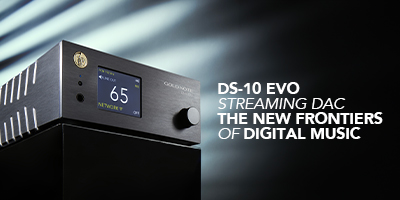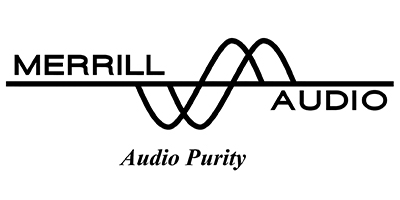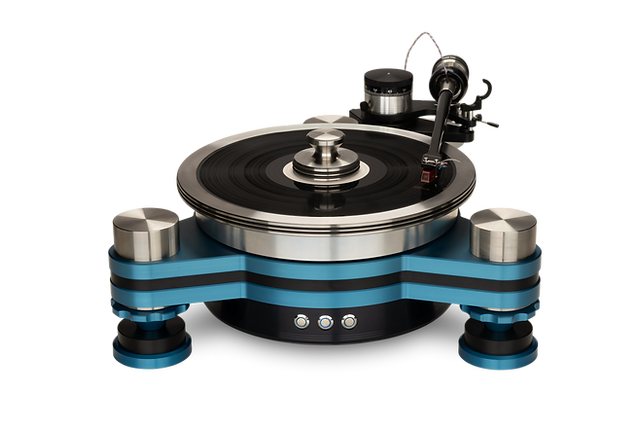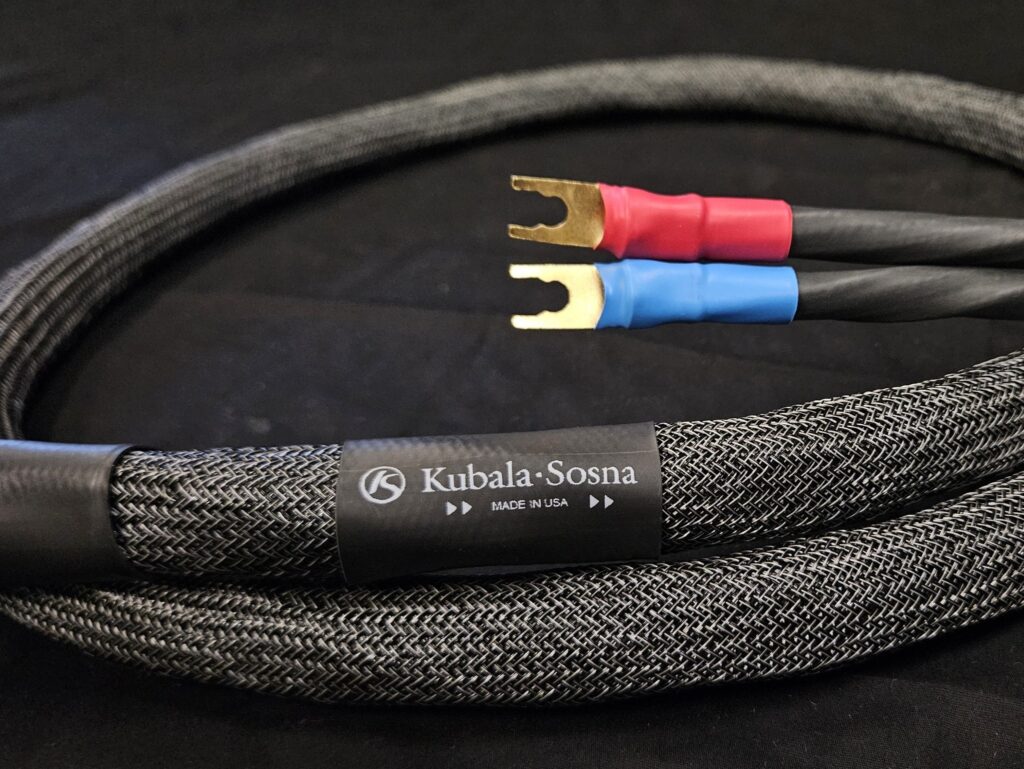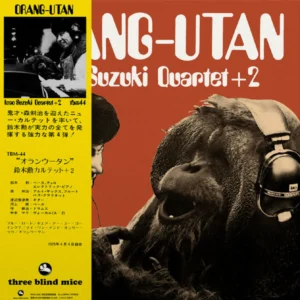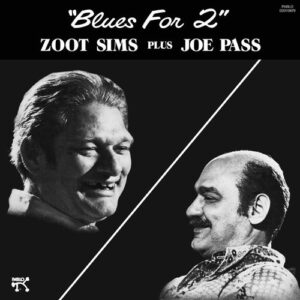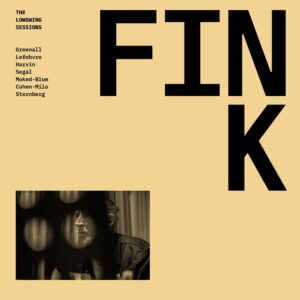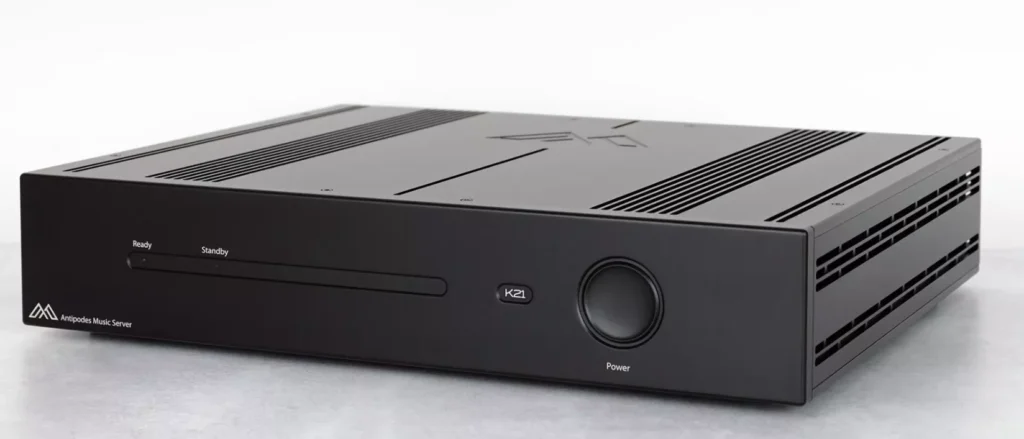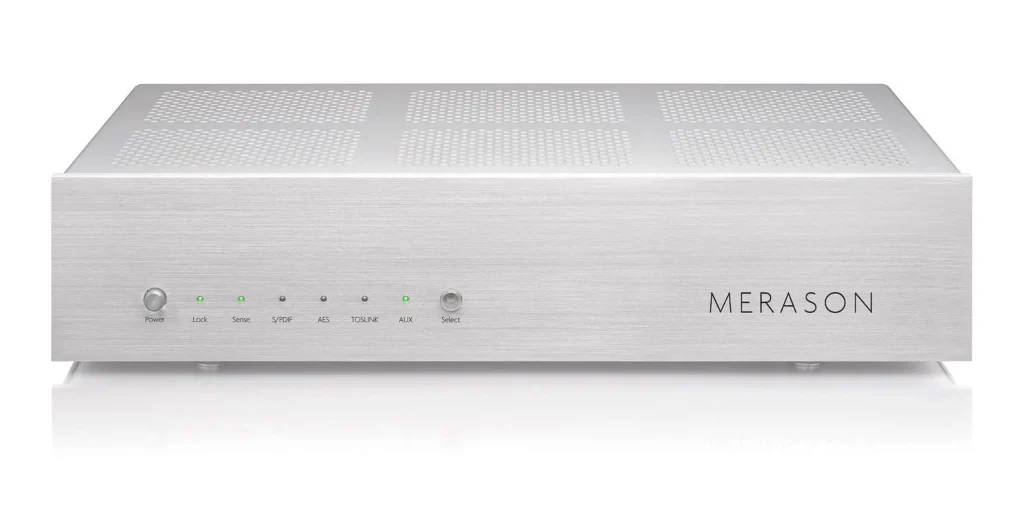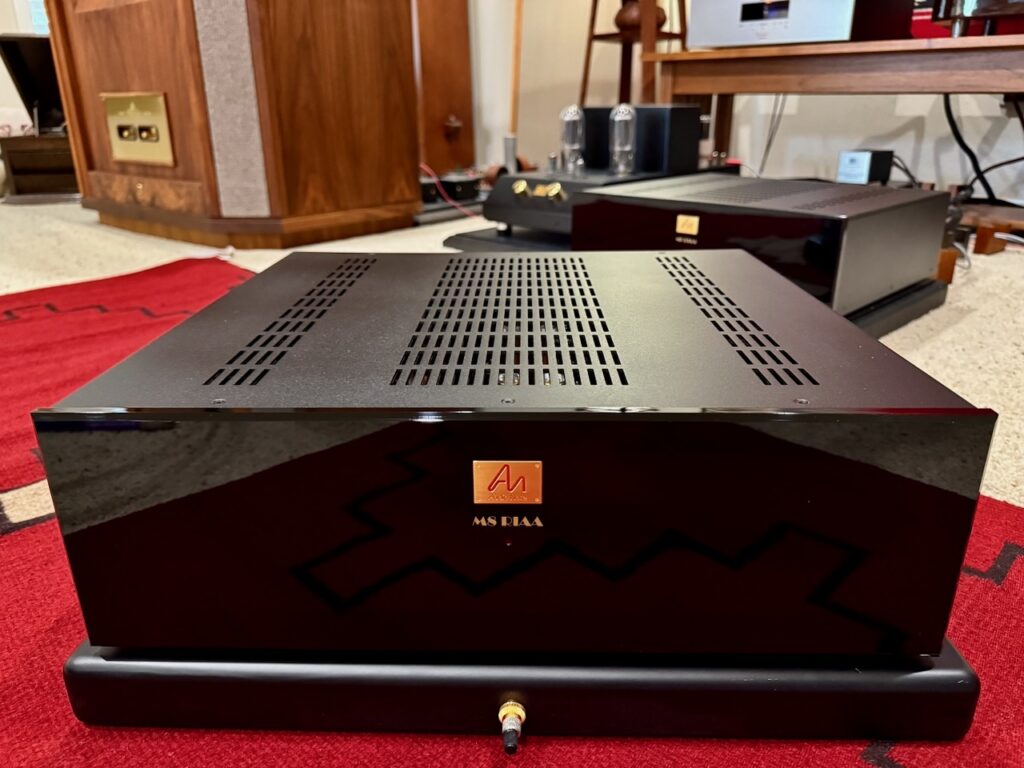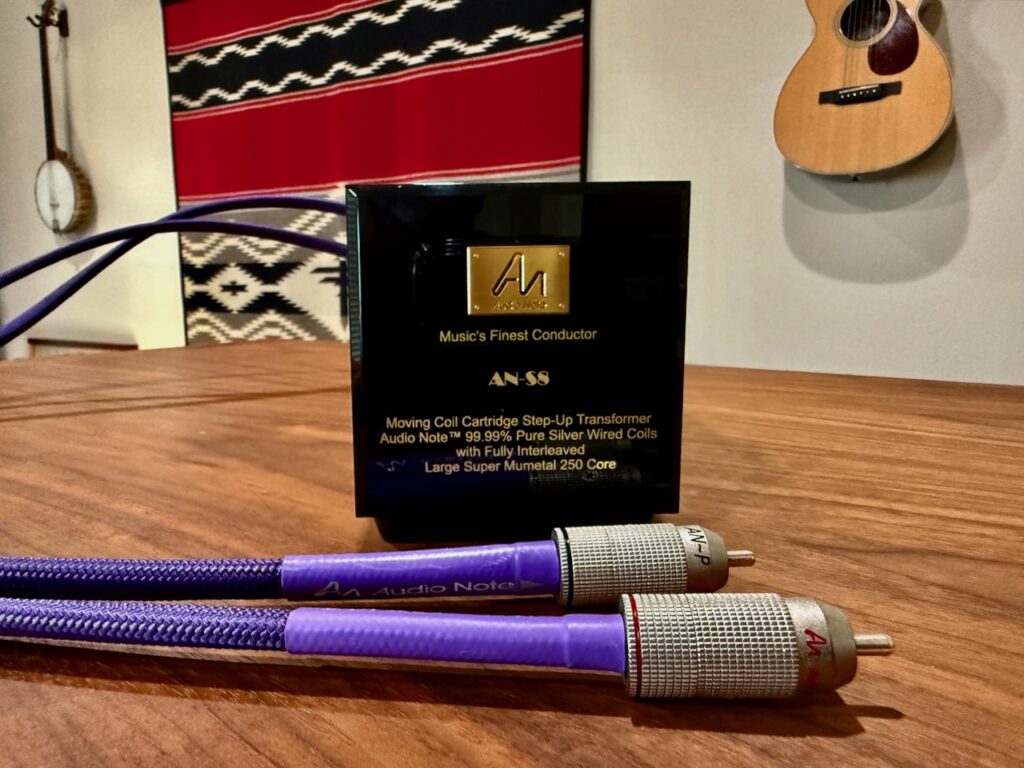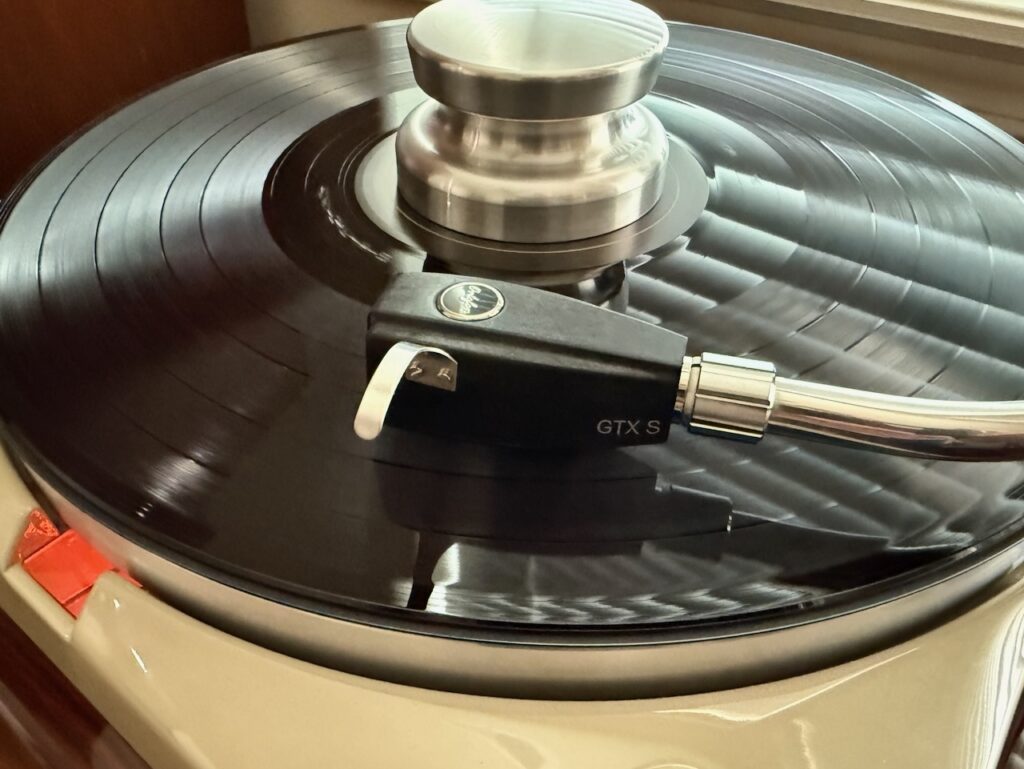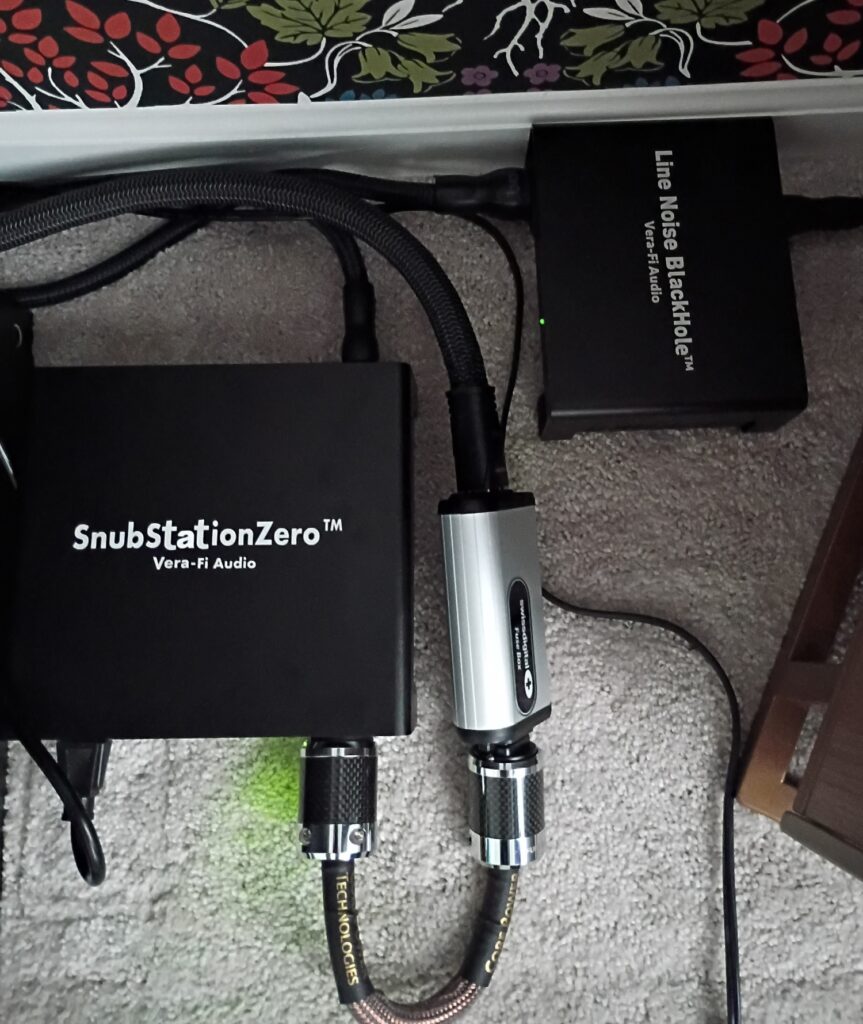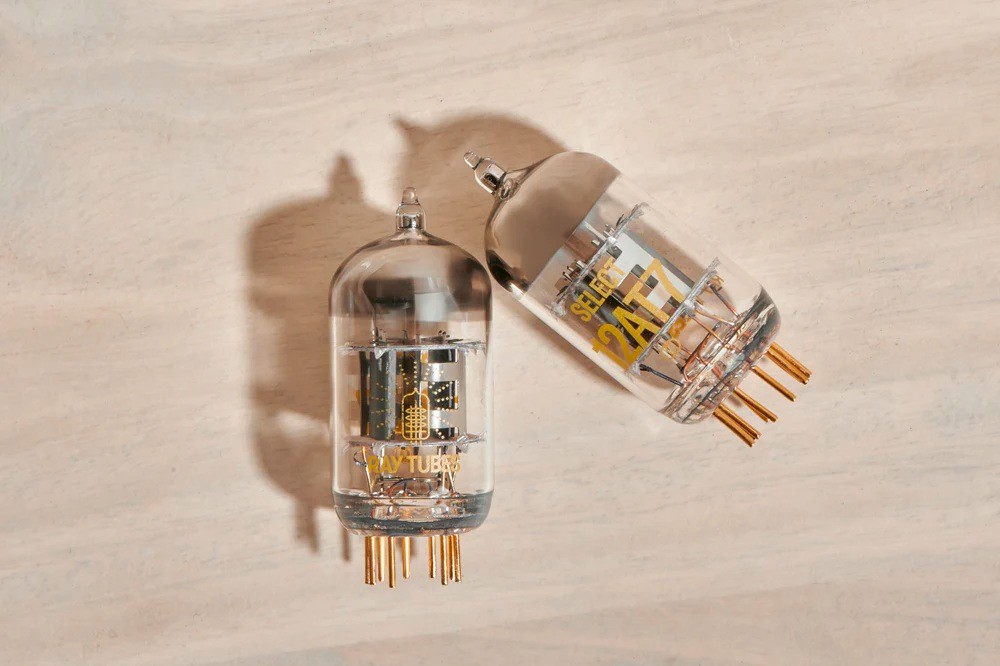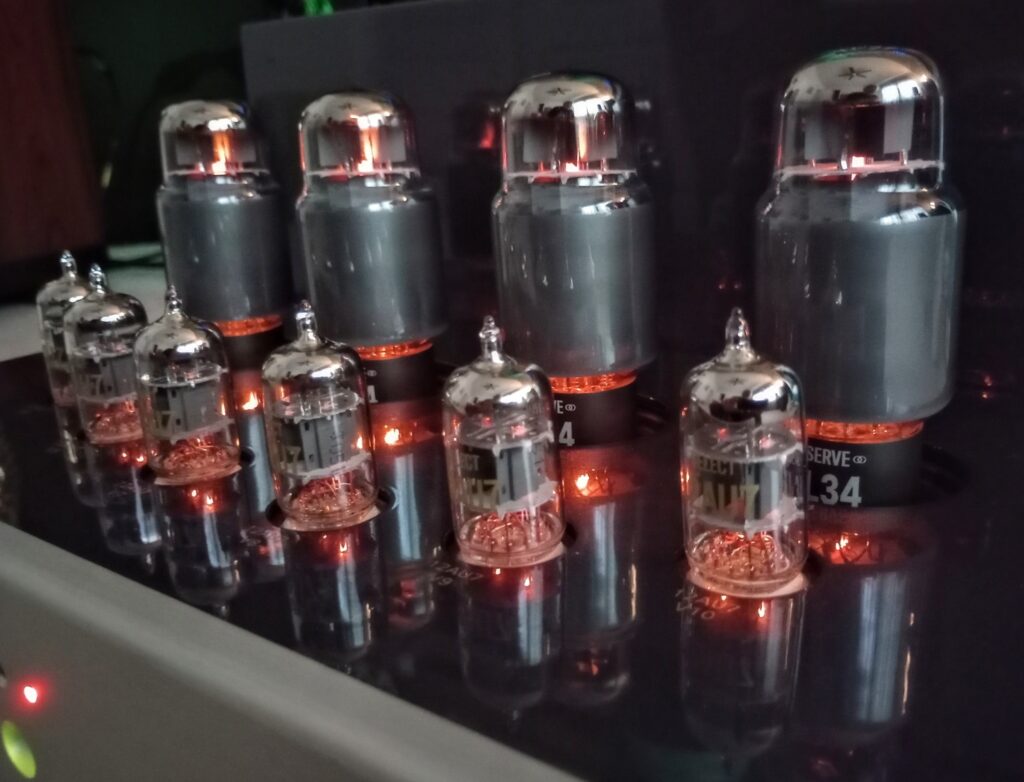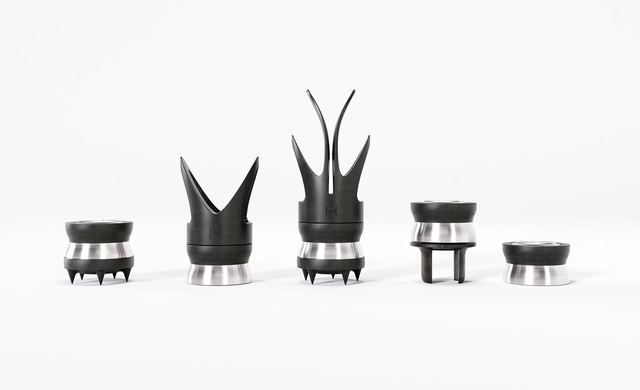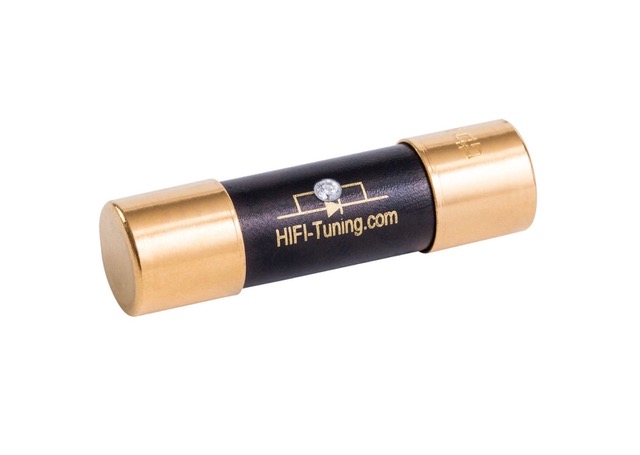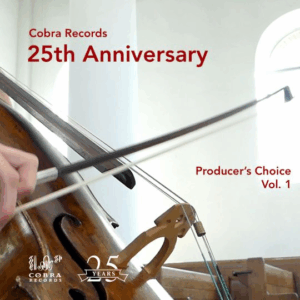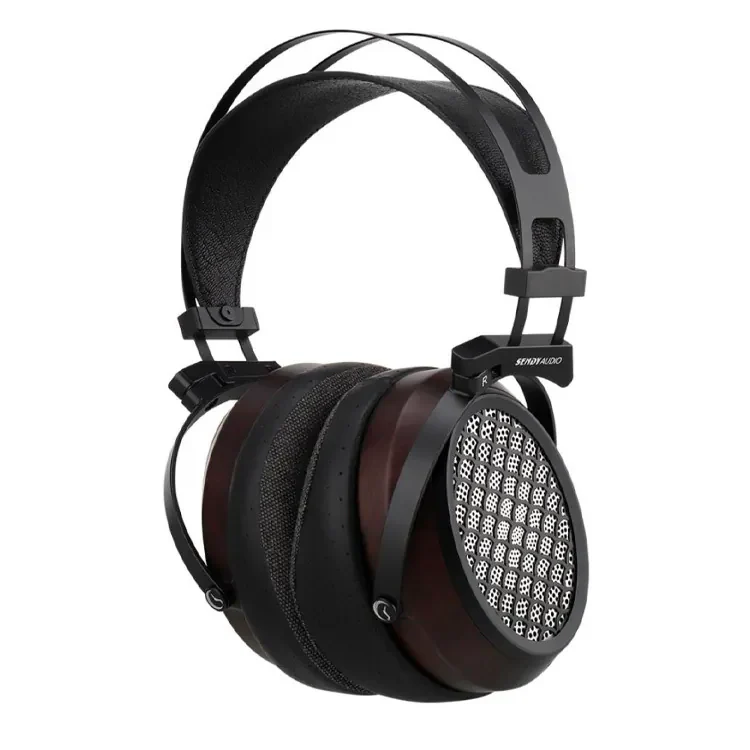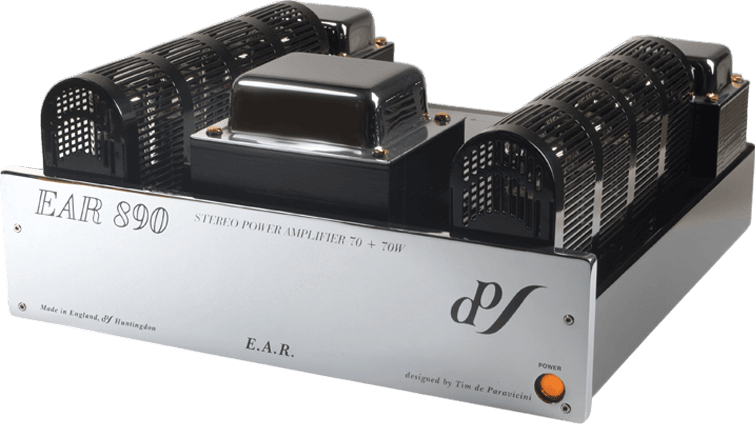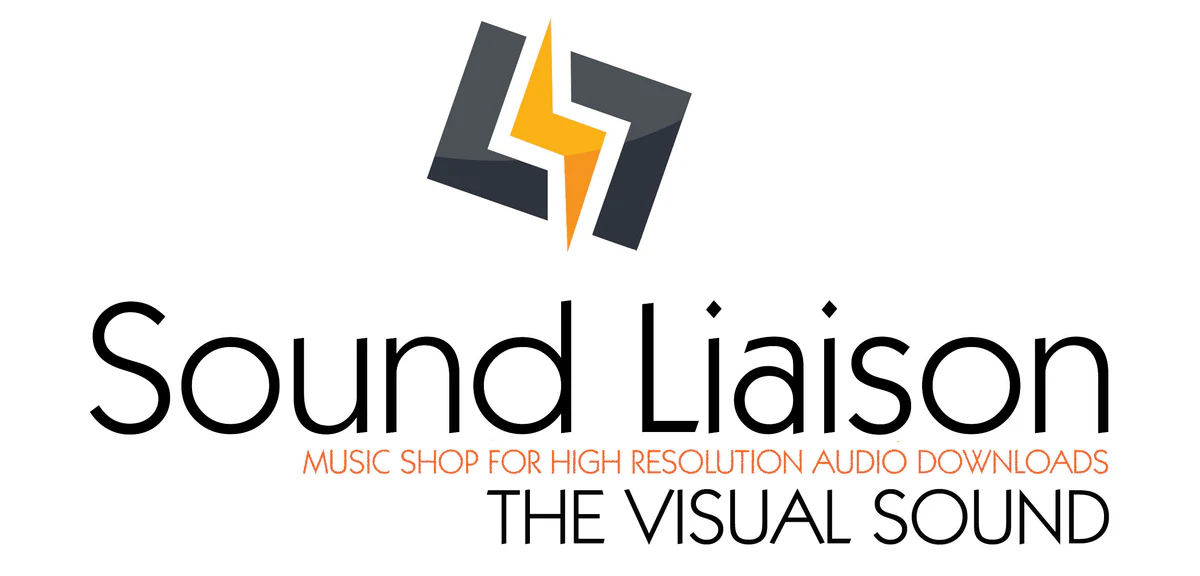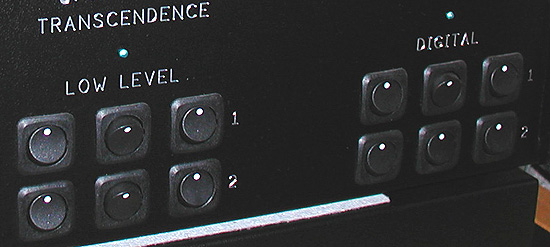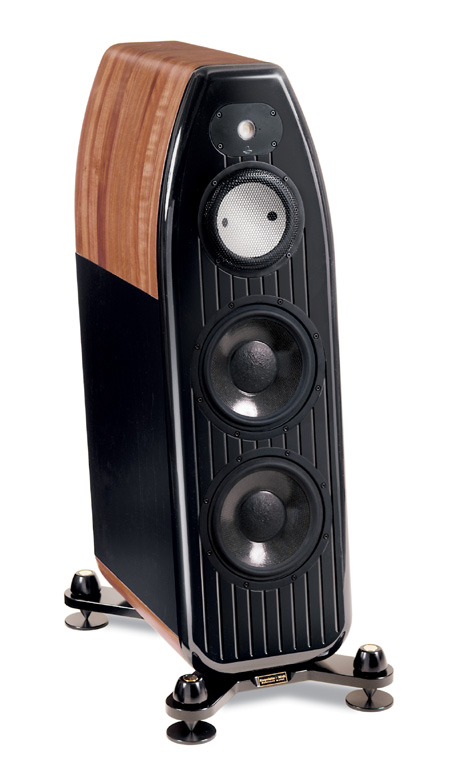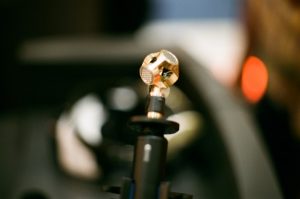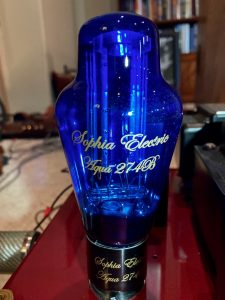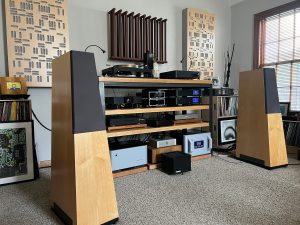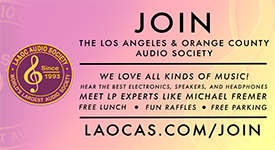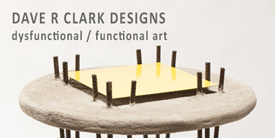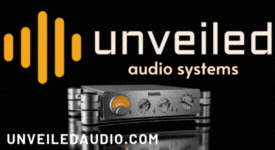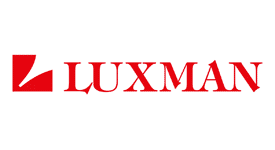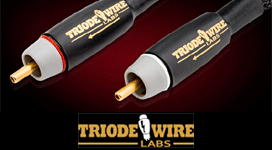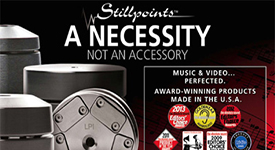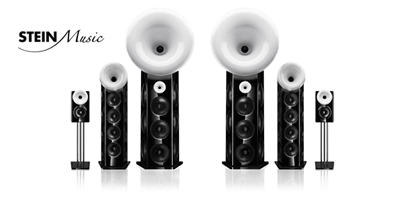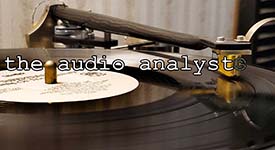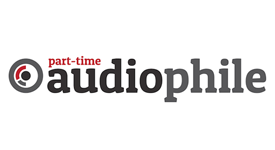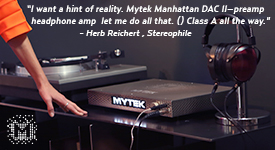Beginning at the end of 2003, Positive Feedback established its first annual awards for fine audio. The Brutus Award was established for the best that David Robinson and Dave and Carol Clark had heard in their own listening rooms during that year. You can think of it as our equivalent of an "Editors' Choice" award.
The Gizmo Award, on the other hand, was established in memory of our very good audio friend, Harvey "Gizmo" Rosenberg, and is given by David Robinson to the most conspicuous audiomaniac(s) of the year. Only one Gizmo is given per year; some years, no Gizmo is given at all.
The following is an opportunity for our editors and writers to recognize superior merit in the audio arts though their "Writers' Choice Awards." Our writers and reviewers have been given broad leeway to cite excellence in fine audio wherever they find it, products, people, recordings, events, groups, etc., so that our readers can be better informed.
It is our hope that you will find the Positive Feedback Writers' Choice Awards to be helpful to you in your audio journey.
All the best,
Positive Feedback
John Acton
Audience aR6-T4 ($6900)
My first Positive Feedback Writers' Choice Award for 2025 goes to Audience AV's aR6-T4 power conditioner. The product of Audience's considerable acumen related to power and power conditioning, the aR6-T4 employs the company's most advanced technologies to achieve heretofore unrealized levels of performance. The aR6-T4 utilizes its premium Aura-TR teflon capacitors, AU-24 SX OCC wiring, Hidden Treasure duplex AC outlets, and proprietary S-Filter large-core balun transformer to eradicate power-line noise, radio-frequency interference (RFI) and electromagnetic interference (EMI). Audience additionally treats the circuit with its Extreme High Voltage Process (EHVP) to create predictable paths through the crystalline grain structure.
Paired with Audience's flagship frontRow powerChord, the aR6-T4 power conditioner feeds my system ultra-clean power, with ravishing sonic results. Transparency and clarity abound, affording me greater insight into recordings I thought I knew inside and out. Tonal colors are fleshed out and textured, and images are more dimensional and tactile, leading to a level of immediacy and musical involvement that foster extended listening sessions. My system's rendering of dynamic contrasts have been transformed, leading to a heightened sense of verisimilitude across all volume levels.
The efficacy of any addition to a high-performing audio-playback system can, in many cases, be most ably evidenced by its removal; in the case of the aR6-T4, it doesn't take long for me to realize that Audience's premier power conditioner is an indispensable component, one that I cannot live without.
Review forthcoming.
Esoteric Grandioso K1X SE ($44,000)
My second Positive Feedback Writers' Choice Award for 2025 goes to Esoteric's flagship one-box SACD player, the Grandioso K1X SE. With the previous K1X model, Esoteric introduced two of its most revolutionary updates, the VRDS-ATLAS SACD transport and Master Sound Discrete DAC; taken in tandem, these two upgrades revolutionized the performance of the K1X, adding warmth and organic continuousness to the prior K1's already-world-class levels of resolution and transparency. The SE version of the K1X incorporates two more refinements: improved analog circuitry based on design breakthroughs introduced with Esoteric's Grandioso C1X preamplifier, and new discrete clock technology. All this, of course, built upon an uncompromising brand foundation of premium parts and quality of construction.
The incremental updates afforded the SE version of the Grandioso K1X may not read like much, but the sonic results are staggering. In my long tenure as an audiophile and reviewer, I've never encountered a source component of such superlative performance. The perfectly-matched attributes of warmth and resolution present in the K1X are now complemented by a greater sense of ease and engagement. All vestiges of digital artifice have been minimized to such a degree as to be rendered unnoticeable, and this realized with standard Redbook CDs. The SE version of the K1X exceeds the performance of its predecessor in two key areas. First, there is a liquidity to the presentation, coupled with greater resolution in the midband, that imbues the presentation with greater flow and lifelike texture. Second, and most significantly, soundstage layering and image precision are improved to an astonishing degree. Immediacy is enhanced, as is dimensionality, affording me the ability to peer more deeply into a performance and extract consummate levels of insight.
Esoteric's K1X SE SACD player is a technological tour-de-force and an aural revelation. And Esoteric isn't resting on its laurels at this pinnacle of achievement; they offer additional upgrades to the K1X SE, allowing the owner the option to add an external clock and/or power supply.
Not formally reviewed.
Myles B. Astor
HyperAnalogue HyperSonic X4 moving coil cartridge ($18,000)
Pricey? Absolutely. But very few cartridges retrieve this much information from the record grooves placing the HyperSonic X4 cartridge squarely in rarified territory. Yet, the HyperSonic X4 cartridge with its transwarp-like speed never sacrifices tonality for resolution. The HyperSonic X4 truly shines when used with recordings that have no limits on performance potential. It also offers unmatched transparency, soundstaging, and dynamics. One cautionary note. Due to its low output, the cartridge should be paired with a quiet, high-gain phonostage to ensure optimal performance.
Read more HERE
VPI Avenger Statement Plus with outboard Vanquish power supply (Avenger Statement $50,000, outboard Vanquish power supply $20,000)
Kubala-Sosna Ovation speaker cables ($16,500 first meter, $2800 each additional meter)
Realism is the operative term here. As good as the previous Realization cable line was, the new Ovation line with Kubala-Sosna's latest OptimiZ4 architecture is simply in a league of its own. (Revelation is a better name for the new cable line.) So special that it's like inserting a new component into the system. Ovation cables were one of two products I heard this year that clearly lessened the artificiality and coloration present in recordings. The Ovation cable's transparency, low end and low level resolution are extremely impressive; but it's the speaker's cable ability to balance out that ratio of fundamental to harmonic overtones that sets this speaker cable apart from several other speaker cables that have passed through my system this year. My new reference. And yours.
The Year in Music
New LP Releases
Reema, One for Sorrow, Two for Joy. Low Swing Records LOSW013, 1-step, 45 rpm.
UK artist Reema returns after a five-year recording hiatus with her third album on Guy Sternberg's Berlin-based Low Swing Records label. Reema's latest effort features ten new songs spread out over three record sides. One for Sorrow, Two for Joy is a little more upbeat than Low Swing Sessions but still retains Reema's deeply introspective and personal lyrics. Her voice has matured and the new album features songs such as "Boundaries, Magpies and You'll Be Dancing." The orchestration here is, if possible, even better than her earlier efforts anchored by the addition of Hammond magician Dan Hemmer on the B3. Best news of all? This album is, as are all of Guy's Low Swing Record releases, pure analog. In other words, zero-bit recordings. Guy is a relatively new name in audiophile music circles doing magnificent work and deserves the audiophile community's support. Me? I'm waiting on pins and needles for the 15-ips tape release!
The Paul Sawtelle Big Band, Live at Pacific Audiofest. Hyper Music Reference Standard Volume 2. Brilliance Music BMS 016-45, 45 rpm, 1-step pressing.
There's a hint of duality going on here. Album one dates to the 2022 Pacific Audiofest while album two traces back to the 2023 show. I found the A/B sides to be good; they were, however, slightly dry sounding, a little lacking in the low end, etc. I reminded myself that the album was recorded at a hotel. Then I played the C/D sides. Whoa! What a difference. Viva la difference! It seems that between shows Gary Koh and people responsible for the actual recording Philip Chance and Ki Choi got together and improved the sound of the recording. Whatever the case, the bass is much improved, the sound is richer and more fleshed out and most of all there's a ton more room sound on the C/D sides. You're going to absolutely love the big band musical pieces chosen for inclusion on this album! Plus the tracks provide a good test of your audio system, too. The LPs come in topflight packaging, and I especially appreciated the short historical and musical synopsis of each song in the accompanying booklet. Live at Pacific Audiofest is a no brainer to add to your record collection.
New LP/Tape Releases
Jerome Sabbagh, Stand Up!. Analog Tone Factory, AT-003, 1-step pressing and 15-ips tape (also available as download).
Tenor saxophonist Jerome Sabbagh reunites with former bandmates Ben Monder (guitar), Joe Martin (bass) and Nasheet Waits (drums) on Stand Up! featuring eight new compositions by Jerome. Each song is, "Dedicated to a person (or people) who has impacted the path of his [Jerome's] music—some of them friends and colleagues, most of them influences and inspirations." My favorite track from Stand Up! is the very first, Ray Charles inspired R&B tune "Lone Jack" with Jerome's silky playing combined with Ben Monder's experimentation on guitar. As good as the 1-step LP sounds on this live-to-tape, band all in the same room recordings, the tape really rules the roost here. Just a creamier, richer, more fluid, realistic sound. Sponsored by Ana Might Sound in Paris.
LP Reissues
Ondekoza, Fujiyama. Modern Audio Ltd, UHQLP, ½ speed mastering (Miles Showell), 1-step pressing, Super Clarity vinyl.
Ondekoza's album Fujiyama is the most eclectic musical selection of 2025. RCA Victor Japan celebrated their 70th anniversary with the recording of Fujiyama in 1997. It wasn't until 2021, however, that this originally all-analog recording made with the mighty 24-track Studer A820 and mixed down to stereo using a Studer C37 1-inch, 2-track saw the light of day on vinyl. Make no mistake either. Fujiyama isn't another audiophile drum record. This album includes six compositions by Ondekoza along with three compositions by distinguished Japanese composers. Of note is the Maki Ishi composition Monochrome II featuring traditional Japanese instruments such as the Koto and Shakuhachi (Japanese flute). Sonically, this recording separates the men from the boys with its huge dynamics, deep and powerful bass (oh those 2-meter drums!), tonality, the smaller drums' lightning-fast transient attacks and the tremendous sense of space. Oh yes. The sound of this new LP reissue puts the 2018 UHQCD to shame.
Isao Suzuki Quartet+2, Orang-Utan. Three Blind Mice, TBM-44/Sony MHJL 358.
Fans of the 70's Three Blind Mice jazz recording won't be disappointed by this Bernie Grundman remastering done from the original tapes. One of the rarer TBM releases, an original Orang-Utan lists for over 400 smackers on discogs.com. Orang-Utan is the follow-up recording to Suzuki's highly praised first release Blow-Up and features two standards and two new Suzuki compositions. (don't get the Le Tres Jazz French reissue). Kazumi Watanabe's guitar work accompanying guest artist Mari Nakamoto's vocals on "Where Are You Going" is one of the albums highlights!
Zoot Sims and Joe Pass, Blues for 2. Pablo/Analogue Productions, D2310879
I haven't kept up with Analogue Productions' recent Pablo reissues since I already have most originals and the 2002 45-rpm Revival Series. The new reissues I've bought, however, have all been excellent with my favorite being Zoot Sims and Joe Pass' Blues for 2 (for the sake of transparency, I love everything Pass). To quote Pass, "guitar and tenor saxophone have always been a good combination. I think that being in the same register it's a nice blend, and a mellow sound." Indeed, and that's exemplified by the chemistry between these two jazz legends. The easy-going warm tone of Sims' sax and luxurious chord sound of Pass's guitar. The two musicians are in the room and Pass' guitar—especially with that beguiling sounding Analog Relax EX500 cartridge—has never sounded better. Everything just flows effortlessly, and I love their renditions of standards such as "Dindi" and "Pennies from Heaven."
Sonny Rollins, Way Out West. Contemporary/Analogue Productions UHQR 021-45, Clarity vinyl pressing; Art Pepper, Art Pepper Meets the Rhythm Section. Contemporary/Analogue Productions UHQR 022-45, Clarity vinyl pressing.
The advent of the stereo recording era marked a significant milestone in audio technology and history. The emergence of a new technology. The excitement in the air as record labels awaited the arrival of their new Ampex 350 tape machines. (Even if magnetic tape was in short supply.) Here are two of those early stereo masterpieces produced and recorded by the legendary team of Lester Koenig and Roy DuNann, two fabled jazz artists and two super special 45-rpm UHQR reissues for each release.
First the Art Pepper. As Ben Ratliff wrote in his book The New York Time Essential Jazz Library, Jazz A Critics Guide to the 100 Most Important Recordings, that guy, "…leaning against the tree… became one of the famous faces of West Coast jazz." Sadly, much was written about what went on behind the scenes of the recording and not enough attention was paid to Lester Koenig's relationship with and affection for Art Pepper. For some reason, I didn't buy this LP when Chad released it as part of his Fantasy 45/Top 100 Jazz Series in 2002. Art Pepper Meets the Rhythm Section is tremendous whether you play it sides A to D or D to A. Whether you begin with the opening standard "You'd Be So Nice To Come Home To" and Pepper's vibrant sound sax or the closing act and contrasts of Dizzy Gillespie's "Birks Works."
Next, Sonny Rollins' Way Out West (the title being a tribute to the master's first trip to the other coast), a long-time audiophile show favorite harkening back to when Chad had Doug Sax remaster this classic at 33-rpm in 1992. Pick and choose here sonically between the earlier Analogue Productions 2002 45-rpm and the new UHQR. One area, however, where the new UHQR is significantly better lies in the pressing quality and surface noise not to mention the superlative accompanying booklet where John Koenig pays tribute to his father Lester Koenig, one of the early jazz empresarios. Known for the opening track "I'm An Old Cowhand," Way Out West is certainly not lacking for other tunes such as "Wagon Trains" and Rollins' soloing. The tone of Rollins' saxophone along with the overall sound and clarity are extraordinary; the only downside being that early stereo, dual mono presentation. Other than that, it's up, up and away!
LP and 15-ips Tape Reissues
Reema, The Low Swing Sessions. Low Swing Records LOSW002, 45-rpm LP/Horch House, 15-ips tape.
Take your pick here of either the 15-ips tape or 45-rpm record. Both formats will exceed expectations. Of all the comparisons I've made, the difference in sound between Low Swing Records' 15-ips tapes and LPs are among the smallest I've encountered. That's no small feat! The Low Swing Sessions was Reema's first release on Guy Sternberg's new label in 2017. There's a purity to her voice that just grows on you with each listen. and wears her music on her sleeve. There's an ability to paint a picture with her words. She wears her music on her sleeve. Among the highlights are bittersweet folk songs such as the dark, haunting tune "Killer." Brinkmann Audio sponsored this recording, while Reema handled all the artwork.
CD Reissues
The All Star Percussion Ensemble, Arranged and Conducted by Howard Faberman. AudioNautes AN-2502-UHQCD.
An old audiophile favorite gets new life with the UHQCD (Ultimate High Quality CD) treatment. In short, Memory Tech in Japan developed a new method for manufacturing CDs that uses a photo-polymer material instead of the more traditional polycarbonate plastic to more faithfully replicate the pits and in particular the finely detailed pits. Those fans of that insane 1958 RCA Living Stereo blockbuster pop release Dick Schory's Music for Bang, Baaroom and Harp will immediately love this 1982 Moss Music recording. Here though, the music consists of familiar classical pieces by composers such as Bizet, Beethoven or Pachebel arranged for a wide variety of percussion instruments. The sound ranges from the sublimely subtle bells to bone shaking bombastic drums. Coupled with a massive, immersive soundstage. The sound of the CD comes close to my Doug Sax remastered Golden String LP. Then again, that Golden String LP is going to set you back hundreds of dollars.
Tim Aucremann
Atma-Sphere Class D Amplifiers ($6120 a pair)
It may come as a surprise to learn that one of audio's longest running manufacturers of highly rated tube electronics is now making a 100W solid-state Class D amplifier. Ralph Karsten now believes Class D is the future of audio amplification. "If you can get the quality of sound that you find with push-pull amps or SETs or Atma-Sphere's own OTLs, with no worries about finding tubes, no heat and small size, it's a lot harder to justify a tube amp unless it's nostalgia or the like."
The Atma-Sphere Class D amplifier is considerably more efficient than Classes A or A/B, produces little heat, is light weight at 14 lbs. per chassis, small in size at 14"x 11"x 3" and produces 100 watts per channel into 8 Ohms and 200 watts per channel into 4 Ohms. To sound their best, the amps take about 500 hours to fully break-in. During my time with them the review units operated flawlessly. The company offers these amplifiers for a 6 week in-home audition.
To generalize the Class D amp's basic character, they are warmish, smooth and clear, while having lower frequency strength, excellent dynamic contrast and low distortion. With both solid-state and tube-like temperaments, their sound is robust, neither romantic nor wet. They yield a nice sense of flow to music although not quite as liquid as I've heard from certain tube amplifiers.
There is a lot to like about these Class D amps. The build quality is top-notch and from my past experience I can say their customer service is excellent. With their small size and minimal heat, they easily fit in to home environments.
Read more HERE
Juan Ayllon
For me musically, the year, 2025 has continued to be dominated by vinyl and the following products have served it well, earning them my nominations for this year's Positive Feedback Writers' Choice Awards.
Korf Audio HS-A02 Ceramic Headshell ($210)

First, the Korf Audio HS-A02 Ceramic Headshell is a superb component for use in a turntablist's arsenal. Enlisting an alumina ceramic unibody construction, at 13 grams, it is extremely stiff, lightweight, and minimally resonant, making it an outstandingly transparent conduit to hear what's going on with your tonearm and cartridge, as well as the music being served up. The resulting aural image is extremely neutral and detailed—especially in the mid to upper registers.
Whether I'm listening to a new vinyl album or evaluating a piece of equipment that involves vinyl playback, I have found the Korf Audio HS-A02 Ceramic Headshell an indispensable tool for review work and listening. As such, it's quickly become a favorite of mine, and one that I can't see doing without. And, as such, I highly recommend it.
Read more HERE
Dan Clark's Stealth Closed Back Planar Headphones ($3999)
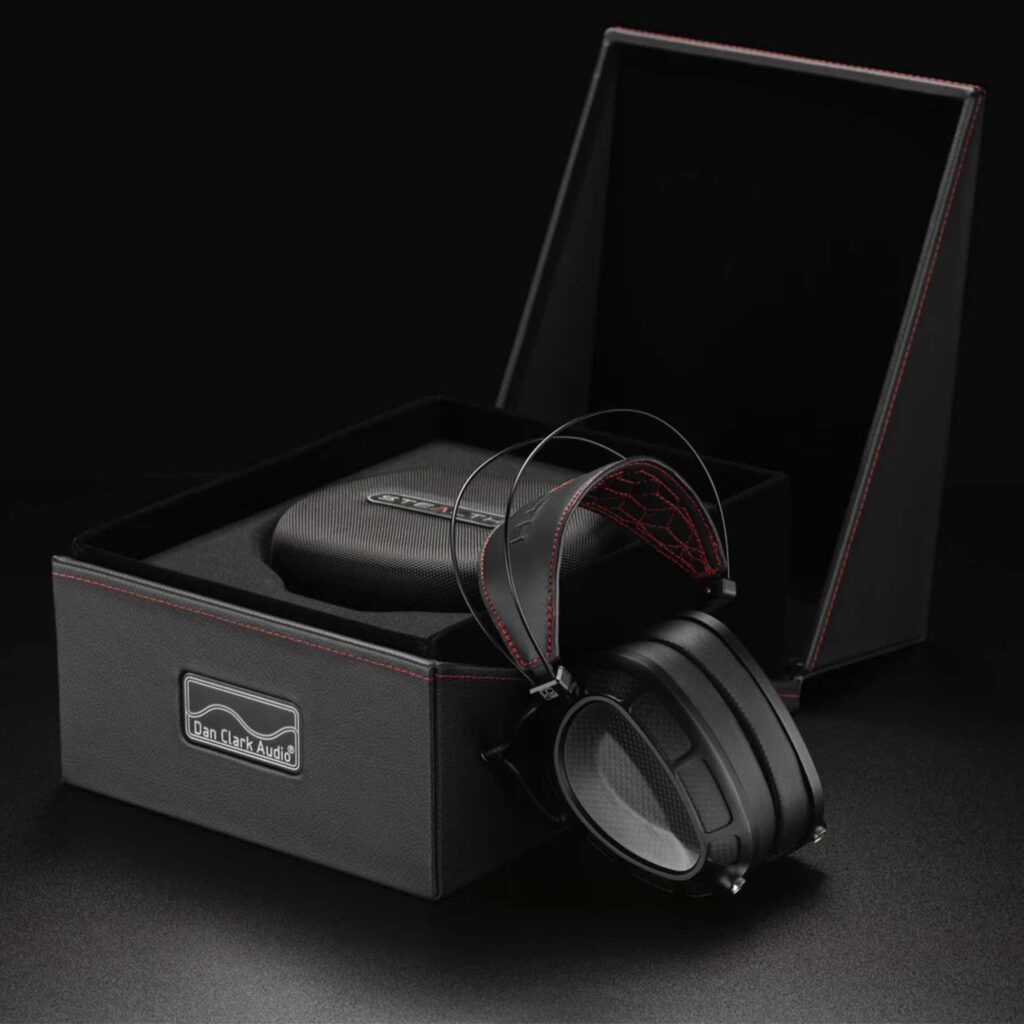
Second, having put the Dan Clark Stealth Closed Back Planar Headphones through their paces on my sound system, I've come to appreciate them immensely. Like a Formula One race car, it is fast, accurate, and precise, cornering the challenging twists and turns of a variety of genres and material with an incredibly deft touch and sensitivity. And, unlike a racer's seat, they're quite comfortable for long hauls.
They're great for watching late-night HD movies, but being so balanced and revealing, the Stealth has also proven invaluable for evaluating other high-fidelity equipment while my bride slept, such as the Gem Dandy PolyTable Signature turntable (HERE), for example. I connected a pair of Dan Clark Stealth planar headphones to the Pass Labs HPA-1 headphone amplifier and dove right in.
Compared to the less expensive, $2000 Dan Clark Ether 2 headphones, it's a notable improvement. That's not to say that the Ether 2s aren't great. They're amazing. However, if you're willing to plunk down some extra cash, the result will be a very refined and noticeably luxurious upgrade. And, as such, I highly recommend the Dan Clark Audio Stealth Headphones.
Read more HERE
ATC SCM40 Passive loudspeakers ($6999)
Third, with its superb engineering and handmade drivers, the ATC SCM40 loudspeaker is like an M-Series BMW; other high-end sports cars may perform better in different areas, but when you evaluate the complete package, the M-Series is better overall. Properly driven with a powerful amplifier, good sources, and a proper room setup, the ATC SCM40 is a superb performer, especially in the midrange, where so much of the vital information lives and breathes.
The ATC SCM40 is also very cohesive. It renders natural sounding highs and a fast and accurate bass with a reasonable low end suitable for various genres ranging from jazz to classical, and folk to classic rock. It's a great speaker for those living in apartments or condominiums, where excessive bass can be problematic with one's neighbors. And, in a larger room like mine, teamed-up with a pair of high quality subwoofers like my REL S/812s, punches way above its price point—so much so that I purchased my review sample.
Read more HERE
ATC SCM40 Active loudspeakers ($13,999)
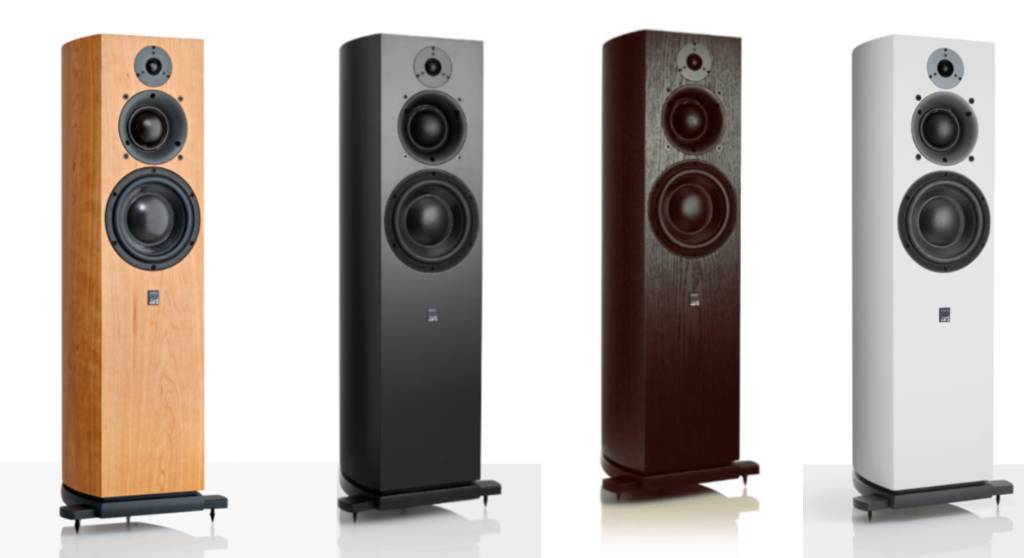
Fourth, following my review and acquisition of ATC SCM40 passive loudspeakers, I was asked to review a pair of their active version. Wow. They sounded like mine on steroids! Boasting the same tweeters and drivers, theirs is a more robust delivery with added gain, dynamics, and control afforded by the active elements of this tri-amped counterpart. They were quite impressive!
If you crave the surgical precision of active ATC loudspeakers—with their hand-crafted drive units, in-house made active crossovers and onboard amplifiers—renowned in studios and homes of discerning musicians and audiophiles around the world, if you desire the wondrous magic and powerful delivery of premium active loudspeakers, the ATC SCM40A may be the right fit for you. If you don't already have a quality, high powered amp or don't want the extra expense or hassle of setting one up, the ATC SCM40As may be your mainline entry ticket to next-level auditory bliss.
As such, I highly recommend the ATC SCM40A loudspeakers for your consideration.
Read more HERE
P4875 II MVR5 Ultrasonic Record Cleaning Machine ($798)
Fifth, I received a hot tip from a local record store owner, who cleans a lot of used vinyl, and at $798, the base P4875 II MVR5 Ultrasonic Record Cleaning Machine model allows you to clean a maximum of five records at a time; however, with an extension kit ($70), you can change it to a longer spindle for 10 records, resting the end on a clip-on support at the opposite side. You can also get a PRO kit ($335) to use the powered spin-dry option, or you can go straight for the P4875II+MVR10-PRO ($1169) and clean away!
I tried one, two, five, and 10 records at a time. They all did a fine job of cleaning, resulting in shiny, spotless discs that played cleaner than they did before treatment. Granted, it stands to reason that cleaning one or two records at a time gives a record less obstructed access to the turgid cavitation process, and following the lead of a turntablist mentor, I am inclined to clean one or two records at a time for my finest albums used in critical listening.
Now, if some day, I have thousands of records like some friends and dealers, I might be tempted to employ the iSonic P4875II and MVR10 Pro solution to clean 10 records at a time and even purchase the PSR01A Pump Station. However, in the meantime, I'm very pleased with the deep cleaning performance of the iSonic P4875 II MVR5 and highly recommend it—so much so that I've purchased my review sample.
Read more HERE
Larry Cox
Antipodes K21 server/streamer ($7000)
The K21 is Antipodes' (New Zealand) entry level server/streamer. Designed first as a server where it's greater computing power is needed, it also performs streamer (renderer/playback) services, though sound, per Antipodes, improves with a less powerful and therefor quieter renderer, e.g. their K41. To my great surprise, the K21 eclipsed the performance of my Antipodes CX server/streamer, which in turn thumped the playback of my son's Wiim streamer.
My "interest" in the K21 arose when I read some claimed that you should upgrade your server/streamer once you get a DAC in the $1500 to $2000 range. BS I thought. Call me chastened. The K21 with my stock Oppo BDP105 was very close to the performance of Merason's DAC1 MkII with my Antipodes CX server streamer. Whether that is true for you will depend, naturally on your system and preferences. The improvements wrought were in the realm of timing and purity (heard as clarity but not in an analytic sense). The performance is smooth, without losing detail, with very good rendition of tone and timbre. But for my wife's new kitchen, I'd be an owner of a K21. I highly recommend Antipodes K21.
Review forthcoming.
Merason DAC1 MkII ($9000)
I reviewed the Merason frerot DAC and its complementary POW1 power supply two years ago. I was quite moved by it. The DAC1 MkII was their new top of the line - since superseded recently. I was even more moved by the DAC1 MkII. If you're looking for bells and whistles, the DAC1 will not be for you, it accepts USB, coaxial, Toslink, and AES digital inputs, which, I believe, are all galvanically isolated. It converts digital to analog using a single Burr Brown 1794A DAC chip for each channel. It features both balanced and single-ended, though the circuit features four independent channels. My system is currently single-ended only, but listening to the single-ended output was a delight. While some might want a remote control, phase inversion or DSP, this Swiss gem does not provide that. Instead you get a simpler, more robust device with fewer bangles inviting failure.
The sonic signature is light and open, rather than darker. It strikes a difficult to describe full-bodied tone and timbre that isn't also warm, nor is it lean and analytical. My experience with the DAC1 appealed to both my mind and my heart, which is how live music holds me—sometimes it's emotional, sometimes live music is more like aural geometry, rather than roses and untethered emotion. Like live music, the Merason DAC1 MkII is engaging and emotional when that's in the recording. The sound is mesmerizing in a way that captivates while escaping description. But for a home remodel, inside and out, prompted by southern California fires, I'd have the DAC1 in my system. Highly recommended.
Review forthcoming.
Jeff Day
The Writers' Choice Awards are always a special time of year in that I'm able to reflect back on the year and tell you about the crème de la crème audio components that I've had the pleasure of listening to and writing about for you here at Positive Feedback.
Duelund CAST Copper Capacitors and Inductors for the Project ($5446 USD)
In Issue 141 Frederik Carøe (Duelund Coherent Audio) and I collaborated on "The Duelund-Corona 832A Project" where we built ultra-performance crossovers for a pair of beautiful vintage Altec Corona 832A loudspeakers using state-of-the-art pure copper Duelund CAST capacitors and inductors in the crossover circuit to deliver a level of musical performance that few contemporary loudspeakers can match.
The pure copper Duelund CAST capacitors and inductors are a performance marvel. They allow so much musical information to come through, so much musical nuance, such beautiful decay of notes, such rich harmonics, such an expansive sense of ambient space, such a vivid presence of flesh and blood musicians in my room, that it was absolutely jaw dropping in the way they delivered the music as a direct transference into my soul.
If you desire to take your current audio system to its next level of performance, I suggest you start on your own Duelund crossover adventure. It's likely to be the best money you've ever spent on a system upgrade.
Read more HERE
M8 RIAA Phono Preamplifier ($69,300 USD) and the AN-S8/L Step-Up Transformer ($18,130 USD)
In Positive Feedback Issue 141 I had the good pleasure to tell you about my listening adventures with the stunning combination of the Audio Note (UK) M8 RIAA phono preamplifier and the AN-S8/L step-up transformer.
These impressive Audio Note (UK) Level Five components are extraordinary performers, with their all-silver circuitry and state-of-the-art internal componentry providing an abundance of musical information with remarkable resolution and clarity. That, combined with a holographic soundstage and imaging, a natural-sounding organic flesh-and-blood presentation of the music, effortless dynamics, unfailingly delivered a big, bold, dramatic, endearing, colorful, spine-tingling, and room-filling musical performance.
The Audio Note (UK) M8 RIAA phono preamplifier and the AN-S8/L step-up transformer are easily the finest components of their kind I've ever encountered, and their performance is at such a lofty level that it is a considerable challenge to articulate what this ultra-performing duo is capable of, as they transcend mere ultra-fi sound quality performance and dive deep into a realm that delivers music in an extraordinarily honest, convincing, real, live-like, and emotionally powerful way.
Expensive, and worth every penny. Highly recommended!
Read more HERE
Ortofon SPU GTX S Moving-Coil Phonograph Cartridge ($1119 USD)
In Issue 140 I told you about the newly released Ortofon SPU GTX S moving-coil phonograph cartridge that combines both classic and modern design elements, to deliver a phonograph cartridge I consider to be truly magnificent. I was so impressed I bought the review sample!
The Ortofon SPU GTX S includes a custom miniature step-up transformer (SUT) inside the SPU body shell, allowing listeners to run the SPU GTX S cartridge directly into a moving-magnet phono preamplifier without the need for an external SUT, opening up easy access to that classic SPU magic for a new generation of listeners.
The GTX incorporates high-performance technology that has stood the test of time, like Alnico magnets, high-purity copper moving coils, and an aluminum cantilever, to deliver a big, bold, richly nuanced, liquid, and warm presentation that made the music irresistible. Highly recommended!
Read more HERE
Tom Gibbs
Vera-Fi Audio
Vera-Fi Audio gets my first Positive Feedback Writers' Choice Award for 2025. Two years ago, when I reached out to Vera-Fi's Mark Schifter with an inquiry about his just-released Caldera 10 subwoofer, I never imagined he'd start sending me a nearly non-stop stream of his remarkable audio products for review. Vera-Fi's gear is of such incredible merit—and so affordably priced—I've had to scream it from the rooftops! My review calendar has been relatively crammed with his gear over the last year or so, and there's even more cool stuff on the horizon—the goodness just keeps on coming!
Caldera 10 ($199) and Caldera 12 Subwoofers ($399)
My review of the Caldera 12 sub in combination with the Caldera 10 was published late last year, following the deadline for Positive Feedback's Writers' Choice Awards for 2024. But both of these amazingly affordable subwoofers continue to astonish me with their ability to plumb the depths of low bass, while integrating perfectly with any set of loudspeakers I've paired them with. The Caldera 10 sub isn't embarrassed by its larger and more expensive sibling, and both are capable of elevating any system with limitless waves of tight and tuneful low bass. I recently played TOOL's "Chocolate Chip Trip" for a visitor, and cranked the volume about five clicks higher than normal—with a pair of Caldera subs in the system, I thought the walls of my home were about to collapse around us! It was a thrilling reminder that when ultra-low levels of subterranean bass is present in a recording, either Caldera model will deliver them with impressive dynamics. I can't recommend either of these subs highly enough, and at their low price points, you can easily get two (or four!) to get the kind of bass response you'd never have dreamed possible!
Read more HERE
Line Noise Black Hole ($595), Snub Station Zero ($695), and Infinity Fuse ($428)
This trio of clean AC power products has transformed both of my audio setups, and led to me quickly jettisoning the previous power conditioning equipment. The Line Noise Black Hole (LNBH) is an EMI/RFI sink filter that passively cleans your AC power, with no current limiting or compression. The Snub Station Zero (SSZ) conditions the AC mains with additional EMI filtration, a state-of-the-art DC blocker, and a soft-start circuit that prevents in-rush current from damaging sensitive equipment. The Infinity Fuse (IF) is a user-programmable alternative to Vera-Fi's Swiss Digital Fuse Box that allows for compatibility with a broader range of equipment. As employed in my systems, the LNBH plugs into the AC mains, the SSZ then plugs into the LNBH, and the IF gets plugged into the soft-start outlet of the SSZ, with either of my tube amps then plugged into it. The trio has elevated my system performance to level of previously unheard goodness; both the LNBH and SSZ have reduced the AC-borne noise in the audio spectrum to an undetectable level, and the SSZ in combination with the IF has allowed my tube amps to provide playback with nearly unrestrained dynamics. Very highly recommended,.
RAY Tubes
RAY Tubes gets my second Positive Feedback Writers' Choice Award for 2025. In January, I became part of an Instagram message chain involving a person identified as "Nelson" from RAY Tubes; unbeknownst to me, Nelson turned out to be Nelson Wu, RAY's CEO. He's a salt-of-the-earth individual who possesses a staggering level of knowledge regarding vacuum tubes and their manufacture. Nelson definitely has his finger on the pulse of the tube industry, and can definitively answer any question regarding tubes, their properties, and their implementation in a variety of audio gear. RAY's range of Select and Reserve tubes are among the best of the best at any price point, often bettering uber-expensive NOS varieties.
RAY Select 12AT7 tubes ($207/matched pair)
In my evaluation of the Advance Paris A12 Classic integrated amplifier, the only thing that held it back from achieving greatness was the pair of baseline Psvane 12AT7 tubes employed in its hybrid preamp stage—which gave it a very pedestrian top-end presentation. Nelson sent a pair of RAY Select 12AT7 tubes to replace them, and the transformation was nothing short of miraculous, elevating the performance of the Advance Paris A12 Classic to near world-class.
Read more HERE
RAY Select 12AU7 ($207/matched pair) and Reserve EL34 tubes ($989/matched quad)
In my ongoing conversations with Nelson Wu, we talked about differences between audiophile standard EL34 pentode power tubes and slightly more powerful and dynamic beam tetrode KT88s—which RAY had just made available in their ne-plus-ultra Reserve line. Nelson felt it would be instructive to upgrade my PrimaLuna EVO 300 integrated with a full set of six Select 12AU7 preamp tubes, then replace my current EL34 variant with his Reserve EL34s. It didn't take long to figure out that with a full complement of RAY preamp and power tubes, the EVO 300 now sounded to me like an amp that should be retailing for double its price point.
Read more HERE
RAY Reserve KT88 tubes ($1127/matched quad)
After my EL34 evaluation, Nelson sent a matched quad of the newly-arrived Reserve KT88 power tubes. Nelson felt swapping them with the EL34s would be an eye-opener for me, and I have to admit, in the PrimaLuna EVO 300, the Reserve KT88 power tubes have become my new go to, and have rocked my audiophile world! Not only do they offer increased power and improved dynamics, but they also possess a level of musicality that made the Reserve EL34 tubes seem almost dull in comparison.
Read more HERE
RAY Select 5U4 ($92), Reserve 6SN7 ($552/matched pair), and Reserve 300B tubes ($960/matched pair)
Upon hearing that I'd gotten a Reisong Boyuurange A50 Mk III SET integrated amplifier, Nelson reached out for my impression of the stock tubes, and also offered to send both Select and Reserve tubes for evaluation. There was only one hitch—the RAY Select 5U4 rectifier tube wasn't quite ready for the marketplace, which would somewhat delay its arrival—but that gave me plenty of time to take a serious listen to the stock Psvane and Shuguag tubes. While I was shocked by how very good the stock Reisong Boyuurange sounded and performed, replacing the tube complement with a full set of RAY Select and Reserve tubes has elevated its performance infinitely. It now plays with more power and authority, and with a significant increase in musicality. My review will be forthcoming in very short order.
Aurender A1000 Network Music Server/Streamer/DAC ($3850)
Aurender gets my third Positive Feedback Writers' Choice Award. My continuously-evolving digital audio system has been built for years around gear from Euphony Audio in Croatia, but that's recently been in serious flux. Euphony is making major changes to their equipment offerings and support system, prompting me to seek a new music server/streamer that will work in combination with their new system—when (and if) it arrives. That search seemed to be going nowhere, until an email from Upscale Audio arrived that featured a surprisingly affordable server from Aurender. I'd seen their gear for years at audio shows, but was under the impression that it was priced far outside my comfort zone. But after reaching out to Kelly Scheidt of Aurender, he offered a better, more affordable option, the new A1000 Server/Streamer/DAC, which ticked all my boxes, and more! The A1000 has proven to be a glorious turnkey solution, with an impressive feature set and amazing sound quality—and I also love Aurender's Conductor app that controls playback. The best part is the A1000 simply works, every single time, with no hiccups or glitches, and the learning curve to get it fully operational was very manageable.
Read more HERE
Malcolm Gomes
Bryston BDP-3 ($4495)
Whatever genre I throw at the BDP-3, the ease and accuracy with which it reproduces the music is truly neutral and engaging. The sonic renderings of all my digital music files are effortless and the audible compression even at loud volume levels is minimal. The bass is tight, tuneful and controlled. The midrange is crisp, lush and uncolored and the treble is sweet and delicate. The imaging is very accurate and stable. I can turn down the volume to unusually low levels before I stop hearing any nuances, details and subtleties in the music.
I can, hand on heart, say that the Bryston BDP-3 has got to be one of the most pleasurable digital music players I have ever heard!
If you have a large digital music collection and are currently enjoying it through one of the previous generations of Bryston's BDP series or another digital music player that is not as technologically advanced, well-built, aesthetically pleasing or feature-rich as the BDP-3, it would behoove you to upgrade to the BDP-3; it is well worth the cost; and your ears with thank you for it.
Read more HERE
Monitor Audio 300 G7 Loudspeakers ($1699 pair)
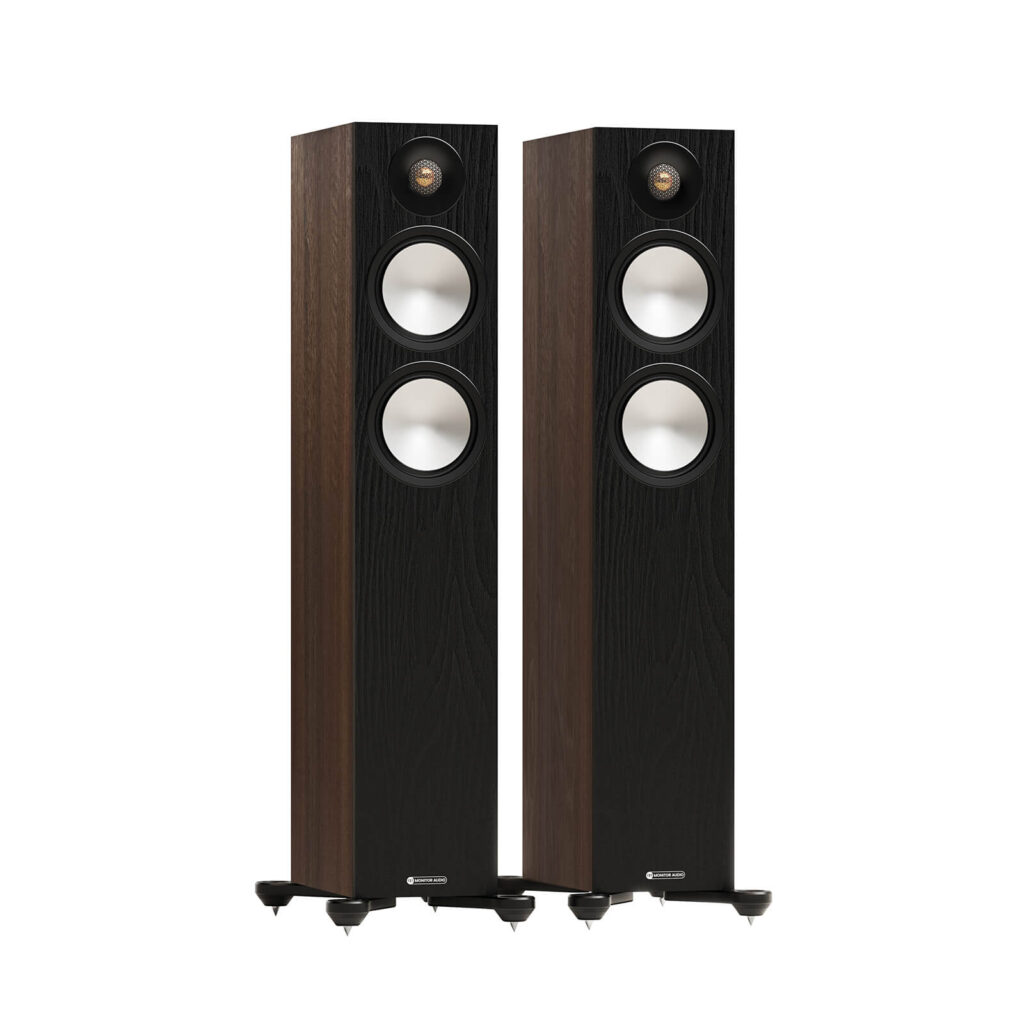
Across all the genres of music that I heard through the 300 G7 what became very evident was the tonal balance across the whole audible frequency spectrum. These speakers have struck a really lovely balance that is a Goldilocks scenario between a bright and dark sonic presentation that is very appealing to the ears.
No speaker in this price range has the right to deliver this level of audiophile sonic performance that the Monitor Audio 300 G7 is capable of. Give it a careful audition; I am certain you will agree that the audiophile world needs to be grateful to Monitor Audio for conceptualizing, designing and building a speaker with the build quality and sonic performance that rivals even a few speakers I have heard that sport a five-figure price tag.
Read more HERE
John Hoffman
Audiomods Series Six 12" Tonearm ($1900 in a matte finish)
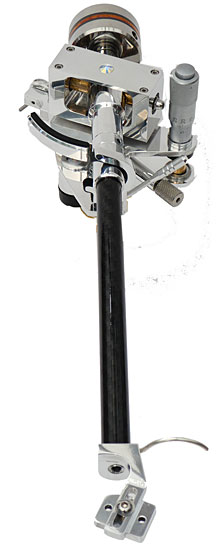
Audiomods has carved out a comfortable niche in the analog market by offering high performance tonearms that are custom built for each customer. This combination of performance and craftsmanship is a rare commodity in today's world. Then consider you get to interact with Jeff Spall, and get your individual needs and concerns met as you commission your tonearm.
The 12" Series Six tonearm is a special component, that has a new series of refinements built into the design that elevates its performance far higher than other tonearms that can be bought for this reasonable sum of money. The carbon fiber arm wand has increased diameter and thickness. The end that fits into the yoke has the thickness of the arm tube walls doubled. The end of the yoke that accepts the arm tube has been increased in diameter and lengthened to provide a substantial mooring point for the arm wand. A new supplier for the bearing assembly has been retained, and this improves that pivot assembly significantly. Finally, the counterweight stub has been machined from brass with a carbon fiber overlay to provide improved resonance control of this region.
This superb tonearm has taken up permanent residence on my Scheu Audio Das Laufwerk No 2 turntable. I have found the arm to be an excellent match with my Kiseki Blackheart cartridge, as well as a number of other moving coils. A few cartridges I have experimented with are the Benz Micro Glider, Denon DL 103, Audio Technica OC9XML, and an Ortofon Verismo. Every cartridge I have installed on the 12" version of the Series Six arm has been an engaging combination. Of course the sound is different, and this tonearm consistently allows each cartridge to express its strengths without intruding on the music. This has been one of my favorite components to review in 2025, so much that I could not let it leave here.
Read more HERE
Silver Eclipse 10 Interconnects ($850 a meter)
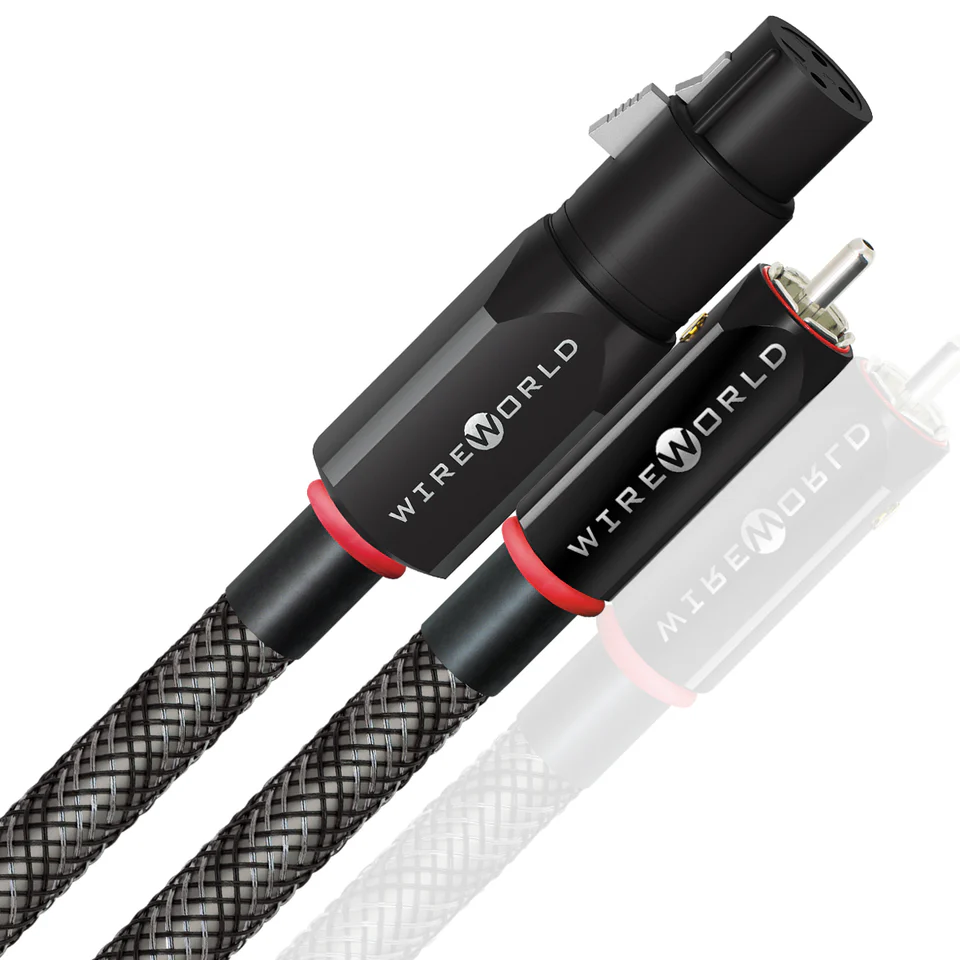
Roughly six years have passed since Wireworld Technology has updated the Eclipse series of cables. In 2025 the Eclipse series 10 cables came to market, and it was worth the wait. David Salz has refined the Silver Eclipse series 10 interconnects in several meaningful ways. The wire itself has not changed, it retains the 7N Ohno Continuous Cast Copper with silver overlay. The dielectric has been advanced to the COMPOSILEX 5 formula. The DNA Helix wire geometry is retained, as this is a core concept to the Wireworld cable design. The key change to this generation of Eclipse interconnects is the decision to encapsulate each individual wire in dielectric material and in doing so, achieve greater control of the magnetic field and unwanted eddy currents in the cable when transmitting audio signals.
The Silver Eclipse Series 10 interconnects can be considered an evolutionary design, as the fundamental elements of this cable remain and a series of small refinements have led to meaningful improvements. I have always been appreciative of the hybrid wire that is used in the Silver series of cables, as they retain the strengths of the copper and silver elements, and meld them to a final sound that is rich and full bodied, but with an upper register that is both detailed and graceful. The Eclipse Silver Series 10 interconnects also excel at creating an acoustic tapestry with well defined and tightly focused instruments and performers. I have always held the opinion that the Silver Eclipse series of interconnects from Wireworld were a solid value in the niche of high performance audio cabling. My time with this latest generation of cables from David has further strengthened that opinion, and this is an interconnect that would be appropriate for many high performance audio systems.
Read more HERE
Key Kim
Aries Cerat Ithaka Minor DAC ($70,000)
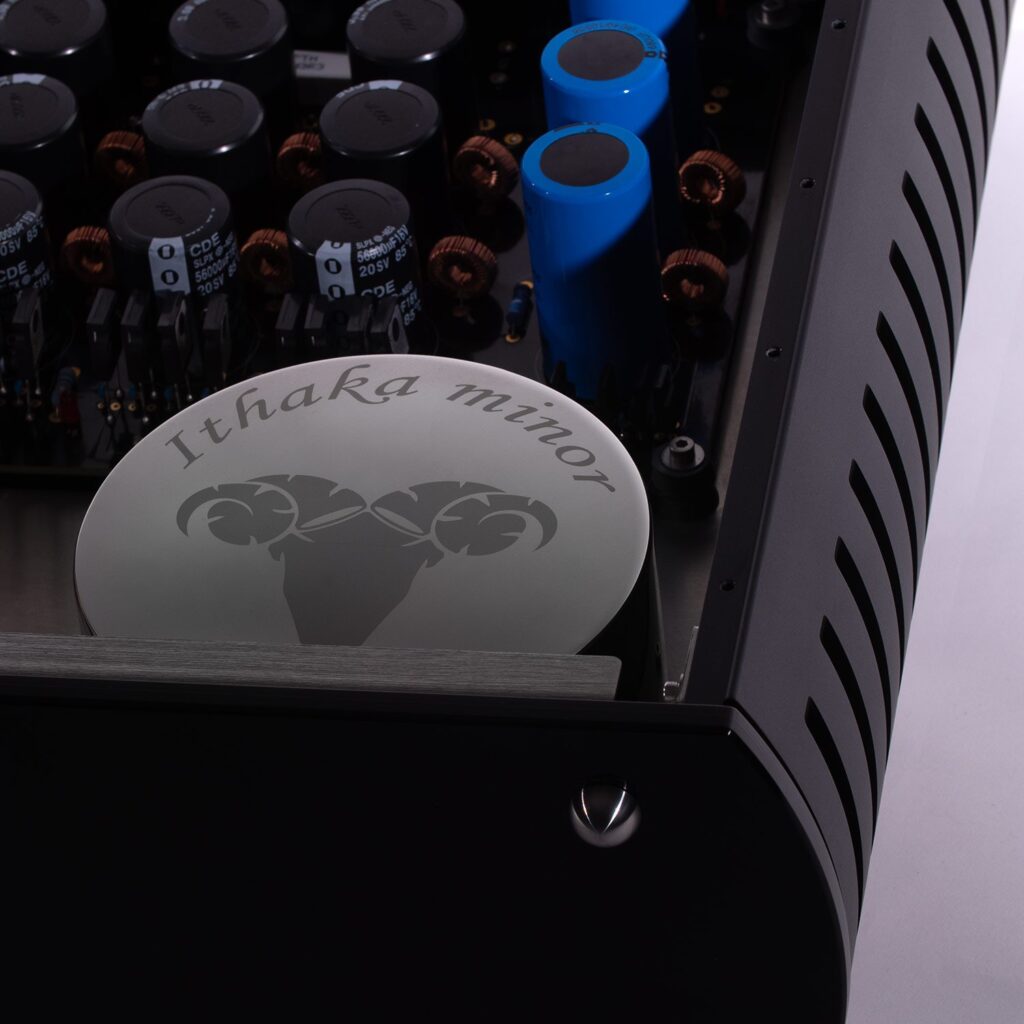
Aries Cerat Ithaka Minor DAC a ladder DAC and it uses a resistor network switch by a N number of switches, N being the bit depth. It is passive with no manipulation of the incoming data stream; it has no digital filters and completely avoids the negative sonic aspects created by filtering the common Delta-Sigma or multi-bit architecture. In the Ithaka Minor, an R2R IC- the classic Analogue Devices AD 1865N-K, a much-praised chip is used, Stavros Danos believes this is the best sounding IC ever made. It uses no less than 12 R2R converters per channel. The AD 1865N-K does not process the data stream in any way, and it's straightforward in its data handling. According to Stavros Danos, this gives the freedom to fully exploit the IC in his DACs.
Ithaka Minor is music to my ears. But even though most of the big dogs (to name a few, DCS, MSB, LampizatOr, CH Precison, and Wadax) sound great, and very close to analog, but for me, its "No cigar." Yes, a lot of people will disagree, but that's my honest opinion. Maybe the manufacturers will red flag me, Key Kim, but what I hear is what I hear. Don't get me wrong they all sound amazingly good. But when directly compared to a good sounding analog set up, the sound of the analog is better. With Ithaka Minor in my system I could go without listening to analog and would not miss it. It is crazy! How could streaming sound this good? Hats off to Stavros Danos. Its timbre, tone, textures, solidity, and emotion rival the best vinyl.
Listening to Rossini's Sonate a Quattro performed by Ensemble Explorations was captivating. Remarkably Rossini composed these stunning works when he was only twelve years old. The strings were exquisitely rendered throughout this recording; they were very transparent, revealing layers of detail and nuance that were emotionally involving. The strings take on a more sophisticated feel that embodies far more realism. The Ithaka Minor performs magically, naturally, and organically. The sound exhibited purity in timbre, tone, solidity, weight, and delicacy with a naturalness as if I were listening to live music.
Read more HERE
EnKlein SHT Interconnects ($22,000 for RCA single-ended and $26,000 for XLR balanced/1.5 meter, and EnKlein SHT speaker cables $33,000/2.5 meter)
While many companies produce cables "by the mile", EnKlein focuses on bespoke audio products. Each item is crafted with precision, quality, and superior materials. Its small-batch manufacturing process ensures meticulous attention to detail with tailored geometry and advanced shielding for optimal performance. EnKlein Signature Hand-Tailored (SHT) products are the results of nearly two decades of extensive research and development in commercial and government systems. The SHT cabling is a well-engineered system that minimizes internal transmission noise, coupling effects, and external electrical and magnetic fields. Each aerospace-grade silver conductor surface is isolated using state-of- the-art materials. The inner dielectric is created is crafted by encapsulating the silver lattices—an electropositive metal—with PTFE, a highly electronegative molecular structure. The outer dielectric is formed using a near-inert electronegative molecular structure. By integrating the differing dielectric materials, we have created a highly effective and preferred uniform pathway for every singular conductor's destructive noise and coupling effects. This effectively neutralizes distortive signals produced by the amplification process.
When I connected the SHT cables in my reference system, remarkably they elevated my great sounding system. The music flowed effortlessly; it was touch more vivid with richer tonal shading and harmonic truthfulness. The midrange was open, revealing, and colorful and the treble was further extended and airy with purity and the bass had greater articulation, weight, power, and extension. Review coming soon
True Life Audio Supreme Series SSA-350 Mono-block Amplifier ($115,800/pair) and True Life Audio Supreme Series SSP-1 Tube Preamplifier ($77,200)
The SSA-350 circuitry is a hybrid design. It produces a powerful 180-watts per channel and the highest quality components are used throughout the circuit. Each component is handpicked, tested and matched. Tube rectification (GZ32 NOS) and tube single-ended input stage (6J5 NOS) are used to drive the ultra linear solid-stage and solid-state current amplifier. It uses two separate linear power supplies for the required voltages. The first power supply is a custom designed EI, low loss lamination transformer which delivers voltage required for rectifier and signal tubes. The second power supply is a custom designed UI low loss lamination transformer.
The SSP-1 is a purist approach stereo tube preamplifier. It's a dual mono Class-A design for both signal and power supply circuit. The single-ended circuit is built around two NOS 6J5 tubes and uses NOS GZ32 as the tube rectifier power supply. Its output transformers are premium quality, using high-purity enameled copper wire and high-quality, ultra-linear lamination from Hitachi metals and it employs high-purity enameled copper wire and uses high-quality lamination to achieve ultra-low losses. It features a precision 48-stepped attenuator volume control with remote control.
My enjoyment started immediately but only got better as I put in more hours. The SSA-350 and SSP-1 possess an uncanny solid footing in both worlds, it has the right amount of tube magic with solid-state control and speed. My reference Lorenzo Audio Labs LM1 sang like a canary. The TLA combo created a soundstage with floor-to-ceiling, wall-to-wall spaciousness that was seamless. It rendered large-scale symphonic works effortlessly, with limitless dynamic contrast along with a powerful and full-bodied low end. Review coming soon.
Bruce Kinch
ifi Neo iDSD 2 DAC/Amp ($999)
I have always been drawn towards cost-effective products, things that solve real world problems while simultaneously elevating the overall system performance beyond expectations. Sometimes they have been components or accessories mostly overlooked by the "real" reviewers in favor of the latest cost-no-object attacks on the state of the art. That can leave many potential gems to the YouTube influencers who often seem more concerned with generating content than actually assessing performance. Such had seemed the case with the iFi NEO iDSD 2 DAC/headphone amp before I got it in for review. iFi has in recent years concentrated less on sit-down home audio systems in favor of the mobile, head-fi, and desktop audio markets, presumably because that's where all the smart young money is.
Now going for $999 USD retail (tariffs?), the Neo iDSD 2 is still almost too cheap (and too compact) for many audiophiles to consider it "High End," but when coupled with quality cables, source electronics, amplification, and speakers (all originally at multiples of the iFi's price, actually), it simply sounds quite splendid streaming Roon/Qobuz in my system. The same can be said for CD/SACD replay via coax and Toslink. The beyond expectations aspect turned out to be iFi's proprietary GTO digital filter, originally designed for their much more expensive Signature DACs. The headphone amp also sounds quite credible to me, but I don't have any $1K+ cans or standalone amps to compare it to. And the real world problem-solver for me turned out to be the little stand for vertical use that allows it to fit snugly in my crowded rack.
Read more HERE
Steve Lefkowicz
I've heard a lot of gear this year and have had a few in for actual review, though those are still all pending my finally finishing writing them up. Yet, I still have a few things that I want to put a spotlight on and feel are truly worthy of a Writers' Choice Award this year.
But things, as usual for me, aren't that simple. One will be a product whose review should post within the next few weeks, one a product that I likely won't review, but I'll explain why that is. The third isn't really a "product" and certainly isn't a piece of equipment.
Beyerdynamic DT-1770 Pro Headphones ($699, on closeout for $299 direct)
I don't write about headphones very often, even though headphones have been a serious part of my music listening experience for over fifty years. I got my first headphones in 1971 as a birthday present so I could listen to my records without disturbing the rest of the house. They were Columbia HP-25 and plugged into our big console stereo I was in heaven. Those got replaced in college by a set of Sennheiser HD-424, and someday I will buy another set of those just to have them again.
But since 1997 I have been immensely satisfied with my Beyerdynamic DT770 Pro 600 ohm headphones. I loved the sound of them when I bought them, and through many different headphone amps they always sounded like what I wanted. I have a few other headphones in what is now a small collection and in each one's own way, I love them all. I choose based on my mood, what I plan on listening to or which amp I have set up at the time. But mostly I've chosen the DT-770.
Several years ago when the made-in-Germany Beyerdynamic DT-1770 Pro came out, I heard them at a CanJam here in SoCal and was bowled over by them. Best way I could describe them at the time was everything you might like about the DT-770, but improved in every possible way. Even more comfortable to wear, better overall tonal balance without really altering the basic house sound. Far greater detail, better bass clarity and detail, while actually having more impact, depth and power. I wanted a set and I wanted them bad. For one reason or another I just never got around to buying them. Then this past year I saw Beyerdynamic was closing them out at $329 (now down to $299) as they were being replaced by a new MK2 version. I didn't hesitate and ordered a set.
Using 45mm Tesla drivers these 250 ohm headphones offer true high end clarity and sound quality, but with pro audio (they are designed for the studio) ruggedness and construction quality, and finally, with a detachable headphone cable. Though some might be disappointed in the cable being a 3-wire (L, R, G) that prevents balanced output.
The do require a good headphone amp that can handle the 250 ohm load. I was a little surprised that my first generation Schiit Valhalla, which was so solidly effective with the DT-770, didn't sound as good as I had hoped. The combo lacked a little in dynamics and excitement, and the top end lost a lot of its naturalness and sparkle. Of all the other amps I've tried, my Centrance HiFi M8 MK2 25th Anniversary Edition DAC/Amp has been the best. In fact, my iPhone 16 Pro with the HiFi M8 MK2 streaming Qobuz is easily the best portable combo I've ever had. It is good enough that if I'll be at home listening to Qobuz and can't crank up the speaker system, I'll happily use this portable setup instead, rather than the big rig with any of my other headphone amps.
They are even better than I remembered from the few times I heard them at shows. After about fifty hours of listening, I figured my description from my first encounter still held true and now after hundreds of hours of use I can say, after twenty-eight years of faithful service, my old DT-770 are pretty much retired. I see no reason I won't be happy with the DT-1770 Pro for many years to come. Since they are a discontinued product, I won't offer any review beyond this, but at their closeout price while they are still available, they are a phenomenal bargain.
iFi NEO iDSD 2 DAC/Amp ($999)
I've used the older model of this DAC, the iFi NEO iDSD, as my primary reference DAC since I reviewed it back in 2021. I've loved its simplicity, its good looks, and most of all, its excellent sound quality. Over the years the display lost some pixels and became hard to read and the remote only worked if I was standing within a few feet of it. But still, it never ever let me down whether playing from stored files or streaming from Qobuz or Tidal. At $699 it was a very good deal too.
The new NEO iDSD 2 expands on the original model by adding features, such as multiple filter choices, gain settings, xBass and xSpace settings for headphone use. It also has a much improved, though still small, color display and thankfully, a much better remote. And for headphone users much more power to drive difficult or low efficiency headphones. The Bluetooth antenna is now inside, hidden by a translucent cover that glows in the dark and it runs aptX Lossless: 1200kbps for those wanting to send Bluetooth signals to it.
Most importantly, when using the GTO (Gibbs Transient Optimized) digital filter it up-samples all PCM files to either 352.8/384kHz (depending on its original rate) while sending all DSD files through unaltered. Careful listening to all four filter choices left me feeling that the GTO was the correct choice (in my system at least) for the best overall sound quality. If you check the link to my review of the original version, understand that the new NEO iDSD2 improves subtly but significantly in almost all aspects of sound quality, while excelling in its ability to let you ignore everything else while getting lost in the music. It's seriously non-fatiguing, rare in moderately priced DACs. Adding an analog input, though using a 3.5mm stereo mini-plug, allows wider use of the unit as a preamp using its easily bypassed analog volume control. Though I found it to be a better preamp than the original, it still sounded better with the volume control bypassed and played through my Khozmo passive preamp.
But overall, a wonderful unit, even at its new price, which is 42% higher than the original.
Read more HERE
Qobuz Connect (free with your Qobuz subscription)
After an interminably long gestation period, Qobuz finally released their "connect" update that allows you to use your phone or iPad to control Qobuz streaming played on your PC or a partnered dedicated streamer. The stream does not pass through your phone, it is just used to control it. I use a Windows 11 Pro Intel NUC based mini PC as a music server, and it required no setup or configuration after the Qobuz app on my phone updated. Just have the Qobuz desktop app running on your PC, then open the Qobuz app on your phone, tap the "device" icon and select your PC (follow the red arrows in the photo). Your phone is now the remote control running Qobuz on your PC. Flawless!
For dedicated streamers, there is a growing list of companies that are adding Qobuz Connect compatibility to their models, so just check the Qobuz website or contact your streamer's manufacturer to see if they've implemented it. Unfortunately, the iFi Zen Stream I've had in for review doesn't yet use it, and I hate using mConnect or every other third party DLNA app I've tried, so it will sit and wait longer. And no, I don't use Roon.
So for right now, if you use a Windows PC, or one of the streamers that have implemented Qobuz Connect, or if you held off subscribing to Qobuz for lack of a connect function that Spotify and Tidal have had for quite a while, now is the time!
Robert H. Levi
SteinMusic Acoustic Discs ( $419.60 for three and $839.20 for six, plus any tariffs)
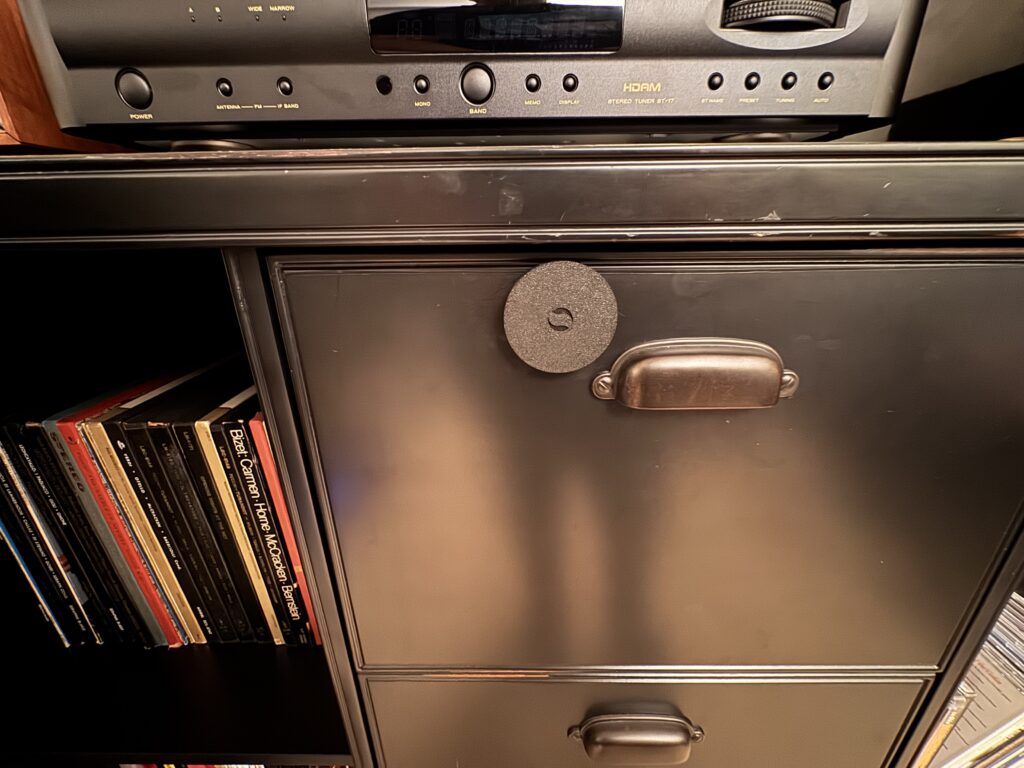
I love acoustic treatments which enhance the sound but do not cause irregularities in the music reproduction at certain frequencies. The SteinMusic acoustic discs will correctly tune an entire listening room with just six, 2-inch discs. Award-winning Holger Stein has developed a disc based on physics and careful listening which enhances both definition and transparency regardless of source. Placed as suggested, I found them equally effective in my near field system as well as my far field system regardless of room size! I did not hear any emphasis at any particular frequencies. What I did hear was a taller sound stage, more depth, and more width to the instrumental field. I heard instruments focused and refined and vocals texturally enhanced. All this is from applying just six of the acoustic discs in the room.
I was fascinated by the improvements in both listening rooms since both rooms are acoustically treated to enhance the presentations. I suppose they were not enhanced as well as they could have been, but these discs are magical in their effectiveness. Instructions for placement can be found online but positioning them is not critical. I found these marvelous discs the best of their breed, and there performance as effective as wall treatments much larger in size. They certainly are not coming down from my systems. For what they do, they are a bargain. Holger stein of SteinMusic deserves the Writers' Choice Award as well as my highest recommendation for his Acoustic Discs.
Read more HERE
SteinMusic Inline Speaker Silver ($1790 set of 2)
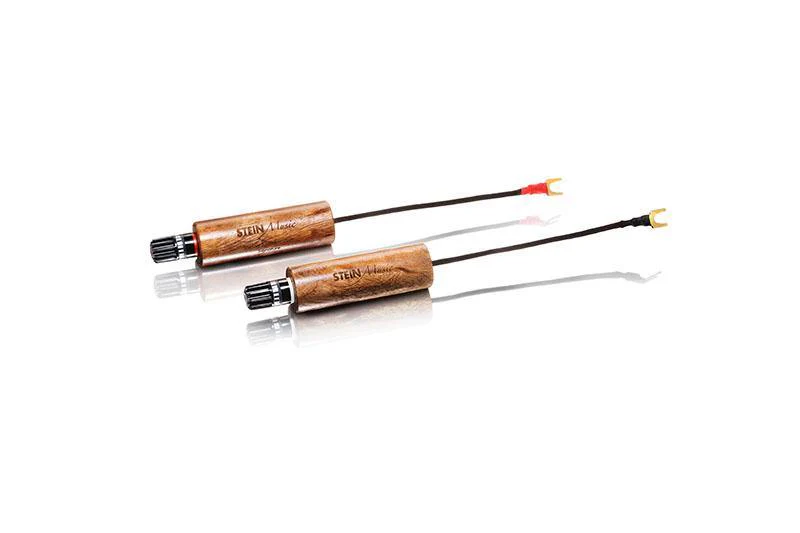
SteinMusic under the direction of the genius Holger Stein has been making speaker matches for at least a decade. These speaker matches adjust the impedance of your amplifier to be truly compatible with your speakers. The SteinMusic Inline Speaker Silver Series is far advanced beyond any of the previous speaker match incarnations. I was stunned when I attached these between my AudioQuest Dragon speaker cables and my Martin Duke II monitors. There were so many improvements I hesitate to list them all in this brief summary, but I heard enhanced resolution, clearer highs, and more accurate spatial imaging. The clean, undistorted sound these new Inline Speaker Silver Devices provide plus the beauty of their wood finish are truly outstanding. Whether I was listening to state-of-the-art LP playback or my best digital front end, improvements were obvious. Audiophiles who joined me for a listening session when they were first installed, unanimously gave a thumbs up!
Just for fun I removed the Inline Speaker Silvers and noted some fuzziness to the sound. Where bass was really tight and solid with the signatures it was now less impactful. I also lost transparency in the sound stage. I quickly returned the Inline Speaker Signature Silvers to their rightful position attached to the speakers. I cannot recommend these more. They are absolutely required as part of your monitor setup or in the mid-range high-end portion of a bi-wire speaker. The Stein music inline speakers signature silver is highly recommended and absolutely deserving of the 2025 reviewer choice award.
Read more HERE
SteinMusic Schumann Generator S1 ($1198 1 device)
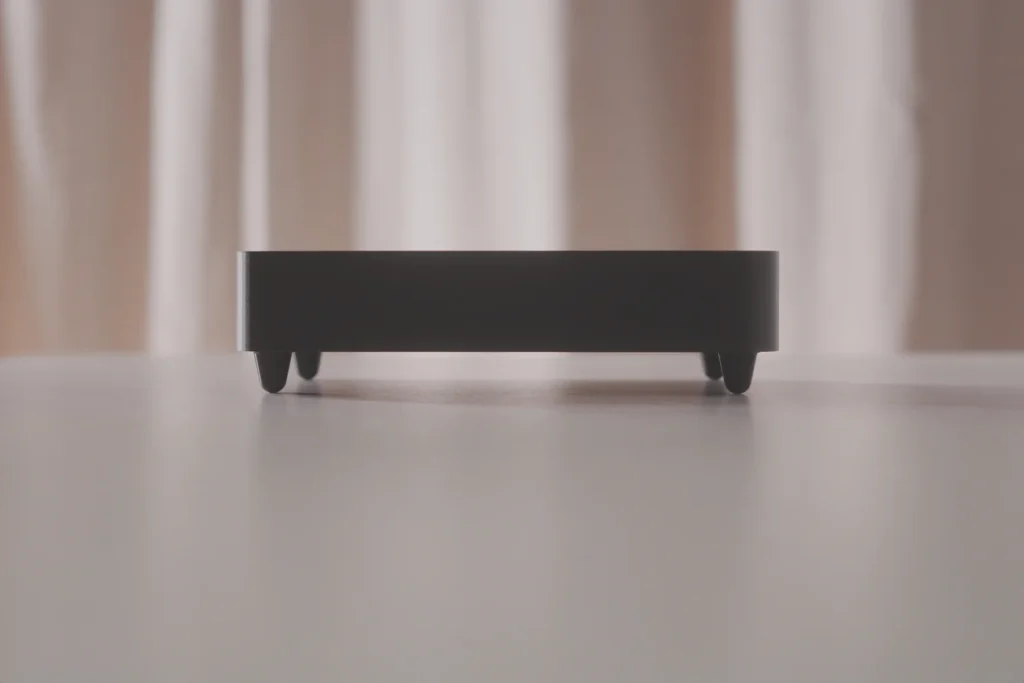
I saved the best for last. Well, maybe not the best but it's certainly the most exciting and special. Schumann generators have been around in kit form for many years but never constructed like a piece of fine audio gear. Leave it to SteinMusic of Germany and the brilliant Holger Stein to create a Schumann generator to put in your high end listening room. It has features that include special antennas added to the sides of the generator as well as within the generator for enhancing the effect. Each unit is carefully calibrated to exactly 7.83 Hertz, but that is not the real story. With four audiophiles present we connected the S1 and listened to both LPs and digital. Not one audiophile present felt that the S1 did not contribute to the clarity of the system. I found the S1 truly fascinating as I had never heard of the Schumann generator in my 60 plus years as an audiophile. Well, it is a true audiophile enhancement when built by SteinMusic of Germany.
Specifically, I heard more depth, a more refined sound stage, and a lot more clarity. When the S1 was switched off, all the goodness instantly disappeared. Additionally, the S1 did not create any lumps or bumps in the frequency response of the system. This is very important. All of the audiophiles present heard more definition with acoustic instruments to varying degrees. As I said, switching the generator off made every improvement disappear. Remember, this is a device that is not connected to the system in any way other than being in the same room. The SteinMusic Schumann Generator S1 is a must own in my opinion and truly deserves the Reviewer choice Award. As Spock would say,"Fascinating."
Read more HERE
Zesto Audio Athena DAC ($14,999)
In for review world premier model 001 Zesto Audio Athena DAC with all tube output stage. With an output topology very similar to the Zesto Audio Lido preamplifier, this amazing new DAC is the one audiophiles have been longing for. Featuring the brand new ROHM DAC made in Taiwan and only four small signal tubes, it will decode any bit rate I have ever heard of including four times DSD. Every bit rate from compact disc and above is decoded in native with no up sampling. In addition to a convincing light show giving you decode information on the front panel, every kind of output and digital input I have ever heard of is available on the back selected by a control from the front.
I threw everything I had at it for three hours, and I was shocked by its clarity, extraordinary definition, and glorious musicality. It never disappointed me, and I am very picky when it comes to Digital. It bested my excellent tube DAC in every parameter from depth to definition as well in authentic realism. Designed by the brilliant George Counnas, who designed nine or ten all tube Zesto phono stages, one must assume he knows what analog really sounds like. The Athena is the epitome of digital to analog. In fact, I would put recordings produced at double DSD and played through the Athena right up there with reel to reel source recordings. It has the quietest noise floor of any DAC, tube or solid-state, I have ever heard. I wholeheartedly give my reviewer choice award to the new Zesto Audio Athena DAC.
Full review coming soon to Positive Feedback.
Frank Madrid
Stereo Dave's Audio Alternative Custom Made Furutech Power Cord ($295 for a 5-foot cord)
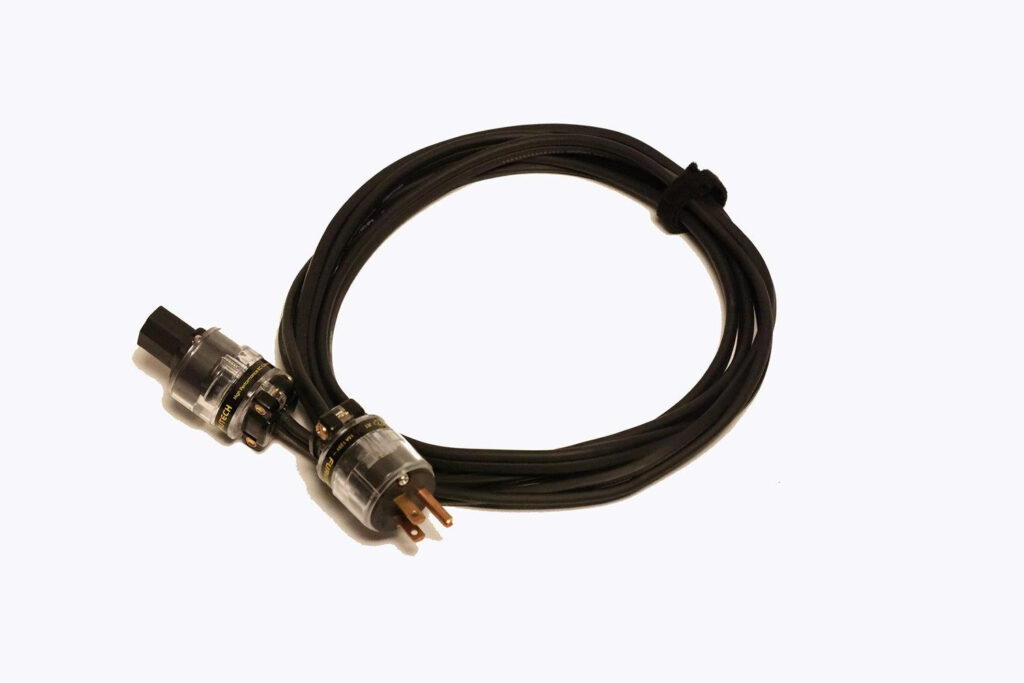
The Custom Made Furutech Power Cords from Stereo Dave's Audio Alternative are solidly built with high quality materials and are very flexible and easy to install. Built with cryogenically treated Furutech connectors and ultra- high strand count very pure oxygen free copper speaker wire. They are then soldered together with hand picked imported solder. They use no sheathing in their construction. The company feels that the various sheathing materials they have tried has been a detriment to the sound quality of their cords. These qualities alone would seem to warrant inclusion into an audio buffs shopping list.
What made me put them on my Positive Feedback Writers' Choice Awards of course is their sound quality. Some say power cords shouldn't make a difference in sound quality. Yes and CD's measure better than LP's and vacuum tubes easily draw you into the music despite their inherent harmonic distortion. What I heard when they were in my system was a positive difference in sound quality. They cleaned up the overall sound. Spatiality has improved. And tone and timbre sounded more realistic. These sonic characteristics are very important to me. That was enough for me to purchase the two review samples and render my old famous maker (and more expensive) power cords useless.
Read more HERE
Marshall Nack
Node Audio SS-1 Support System (SS-1 Module for component support $450/ea, SS-1 Module + Power Cable Support $600/ea, SS-1 Module + Speaker Cable Support $640/ea)
My first award goes to the Support System One (SS-1) from Node Audio, a modular component support eco-system…that satisfies all your isolation support needs. The centerpiece of this elegant accessory is the SS-1 base module. Standalone, it functions as a component footer. By attaching adapters to the base module, it transforms into a cable lift, a loudspeaker support, a spider rack footer. The strikingly innovative modular design combines both eye-catching esthetics and exceptional build quality, plus it is also user-friendly to implement.
Node Audio is transparent about the scientific principles underlying this product, and they are readily understandable to the layman. The SS-1 incorporates technology that drains vibrations from equipment and focuses stray magnetic fields to minimize EMI. The objective was to remove impediments and facilitate a clear sonic path, enabling the component to fully realize its potential. This is what you will hear if you place a set of SS-1 modules under a component. While the characteristics of the sound remain the same—the SS-1 design brief prioritized neutrality—it is significantly enhanced, as if constraints have been removed and the component has been freed up. Dynamic range, soundstage precision, and artifact removal have been clearly elevated.
I also tested the SS-1 with the power cord and speaker wire adapters. With a single SS-1 Power Cable Lift beneath an important power cord, the improvements were subtle. Elevating the entire length of the wire off the floor, the impact became substantial and left me grinning broadly. I was tempted to stop here, but was informed that an even higher level awaits when you optimize placement of the SS-1 PCs by spacing them about 12" - 14" apart. This will likely require investment in more SS-1 PCs, but it's true. Dynamic range left me amazed, while space became convincingly 3-D. The sound was meticulously controlled without feeling constrained or tight. Actually, it was the opposite, smooth and relaxed, characterized by high purity—a testament to the effectiveness of EMI reduction. This was a rare marriage of elevated audio quality and enhanced expressiveness—the best of both worlds.
Over the years, I've tried many cable lifts and component supports, each with its advantages and disadvantages. None satisfied 100%. The Node Audio SS-1 comes closest to meeting my expectations in both capacities. There's no snake oil in this aftermarket tweak. Simply rely on your ears to verify the results.
HiFi-Tuning Diamond Fuses - Supreme³ Copper Diamond and Supreme³ Silver/Gold Diamond (from $175 and up, depending on size and type)
Audiophile fuses have long been a subject of interest among enthusiasts. These specialized products have steadily improved over the years in parallel with advancements in other audio gear, driven by progress in manufacturing processes and materials.
A handful of manufacturers have come to dominate the market. HiFi-Tuning, which has been retailing audiophile fuses for over two decades, enjoys a strong reputation in the industry. But their latest innovation surprised everyone, a high-quality natural diamond is embedded in the fuse ceramic housing. What do diamonds have to do with Hi-end audio gear? You can read the rationale for this choice in my review link below.
In terms of impact, upgrading a single component to diamond fuses yields a subtle overall improvement. As you swap in additional diamond fuses, their effect compounds. Doing the entire system resulted in a substantial system upgrade, akin to installing aftermarket component footers. The unique contribution of the diamonds can be succinctly summarized as refinement, particularly in terms of tone and timbre.
This was my initial outing with aftermarket fuses. I compared HiFi-Tuning's performance with the stock fuses that came with my components. I have not made comparisons against other audiophile brands. But the takeaway is clear, after having auditioned tons of aftermarket tweaks, I can honestly tell you, replacing the stock fuses in your components may offer the most value for money in the accessory/tweak marketplace.
Read more HERE
Rushton Paul
Recordings of Significance, New and Reissued
I am reluctant to suggest recordings of special merit. So many recordings I get to hear are excellent, both musically and sonically. So, my goal here is not to suggest any sort of "best of" but instead to highlight recordings of significance that are moving the art forward in some way. This year that significance is the emergence of more and more Pure DSD256 recordings from a variety of interesting directions. As to why I am so committed to Pure DSD256 recordings and continue to share with you information about recordings applying this technology, see "Get the Master Tape Listening Experience with Pure DSD256, Free Sample Downloads Included" (HERE).
That these are musically excellent and sonically superb is a given. Consider this a celebration of the recording and mastering engineers who are breaking new ground.
New Recordings
Eudora Records, Gonzalo Noqué
Recording engineer and founder Gonzalo Noqué has been releasing albums in Pure DSD256 over the past six years. His approach is consistently without compromise: excellence in music selection, artists, microphones, and microphone placement. His choice of storage medium and resolution has been consistently DSD256 without any PCM processing. And, almost uniquely, his mastering is done entirely in the DSD domain in collaboration with Tom Caulfield at NativeDSD. Why do it? Answers Gonzalo: "To my ears, it delivers what in my opinion is the best digital sound achievable today when recording Classical music recorded in real acoustics. So, in my mind, I can only think: Why wouldn't I do it? Whether the difference is large or small, noticeable by many or few, doesn't really matter." See my 2023 article "Mixing in Pure DSD—No PCM Allowed" (HERE).
Then, in 2024, Gonzalo released what was perhaps the first large complex orchestral performance recorded and mastered entirely in the DSD domain: Homeland - Grieg's Piano Concerto in A minor and Falla's Nights in the Gardens of Spain (HERE). Not easy. But workable. And then demonstrated once again that same year with the release of Mysterium - Noelia Rodiles and Oviedo Filarmonia (HERE).
And in 2025, Gonzalo released a solo guitar recording that deserves recognition as one of the best solo instrument recordings of the year: Preludes and Dances from Brazil, Ricardo Gallén (HERE).
What makes the releases from Eudora significant is that these are recorded, mixed, and equalized entirely in the DSD domain: Pure DSD256-Direct Mixed. No PCM editing. No analog mixing. All entirely in the DSD domain. And the resulting sound quality is the most utterly transparent recorded sound we ever get to hear.
Recent Eudora Records releases in Pure DSD256-Direct Mixed
APSoon Records, Aular Soon
The APSoon Recordings company founders, Aular Soon and Priit Kuulberg, have been releasing some really stunning Pure DSD256 recordings of large orchestral organs over the past several years. Their most recent release this year is perhaps their best yet.
Aare-Paul Lattik, Live at Riga Cathedral. APSoon Records
In this album, organist Aare-Paul Lattik delivers a powerful, aurally stunning, live recital on the massive Riga Cathedral organ. His choice of registration engages the full resources of this immense instrument, with massively deep and impactful use of the 16' and 32' foot pipes with which this organ is endowed. If you are seeking a demonstration recording for your subwoofers, here it is. This is now the third album by organist Aare-Paul Lattik, and musically, artistically, I think it is his best yet. And it is perhaps APSoon Recordings finest organ recording yet, and that places it among the divinity of organ recordings.
For more organ recordings from APSoon, see: "APSoon Recordings - Organ Recordings" (HERE).
Sound Liaison, Frans de Rond
Frans de Rond has long recorded and mastered in DXD, and his "single mic" recordings have been long recognized for their outstanding sound quality. But this year, Frans has recognized with enthusiasm his rediscovery of mixing in analog and releasing in Pure DSD256-Analog Mixed. I wrote about Frans' shift to Pure DSD recording, and my enthusiasm for the sound quality he has achieved, in my recent article: "Bodacious! A Great New Release From Sound Liaison in Pure DSD256" (HERE).
Bluesy May is a great introduction to what I'm viewing as a new era in audio reproduction. Pure DSD has now moved beyond classical recordings and into the more general popular music culture.
Reissues
Each of the reissue albums, or series of albums, listed below are recognized for leveraging the sonic benefits of Pure DSD256. I've written about each of them this past year.
Cobra Records, Tom Peeters
This year is Cobra Records 25th Anniversary, and founder/recording engineer Tom Peeters celebrated with a Producer's Choice release of sample tracks. I wrote about it in "Cobra Records 25th Anniversary Producer's Choice Album, an Audio Education" (HERE).
Tom Peeters, founder and recording engineer of Cobra Records, has gone into his archives to find his original DSD64 tracking channels from albums released between 2007-2014 and has remastered 17 selected tracks in Pure DSD256-Direct Mixed for this Producer's Choice 25th Anniversary release. The improvement in transparency is remarkable, evidencing the huge advantage in sonic purity of Pure DSD recording and mastering versus PCM mastering.
I wrote about the recordings and the process in "Cobra Records 25th Anniversary Producer's Choice Album, an Audio Education" (HERE). This release is significant for two reasons: 1) it demonstrates just how much better Pure DSD256 mastering sounds than the same tracks mastered in DXD as in their original release, and 2) it illustrates the opportunity that exists for future significantly improved sound quality reissues from the archives that many other recording engineers may be holding.
Cobra Records 25th Anniversary Producer's Choice
Yarlung Records, Bob Attiyeh
Bob Attiyeh has celebrated Yarlung Records 20th Anniversary by reissuing in Pure DSD256 some of the 15ips 2-track tape recordings made in earlier years. The results are supremely excellent. This far we have received David Fung's Evening Conversations (HERE) and Orion Weiss' Orion (HERE). Planned for release in December is Ciaramella's Music in the Court of Burgundy.
Yarlung Records 20th Anniversary Reissues in Pure DSD256
Analog Tone Factory, Jerome Sabbagh
Jerome Sabbagh, founder of Analog Tone Factory, has released in Pure DSD256 four of his all analog jazz recordings, all recorded on 30ips reel-to-reel tape and mastered using vintage analog gear. It is a pursuit of a particular sound quality that is reminiscent of the early Blue Note recordings. Myles Astor recognized Sabbagh's album Heart as released on LP and reel-to-reel tape in last year's Writers' Choice Awards, HERE. This year, I think the reissue of all Analog Tone Factory recordings in Pure DSD256 to be worthy of a repeat award. They are a delicious combination of analog sound as heard with vintage audio gear and the absolute transparency of Pure DSD256 as transferred by the excellent Playback Designs A/D converter. If you love analog reel-to-reel tape, but listen to digital, this will be the closest you will be able to get to that listening experience.
I wrote about Jerome's recording process and his DSD256 transfers earlier this year: "Voluptuous Sounds from Analog Tone Factory in Pure DSD256, with free sample download" (HERE).
Analog Tone Factory Reissues in Pure DSD256
Mark Pearson
Keces P14 Super Low Noise Linear Power Supply ($1800)

As an owner of the Roon Nucleus+, I was highly interested in hearing the Keces P14 replace the Switch Mode Power Supply (SMPS) that comes with the Roon Nucleus+. The P14 is a 4 channel power supply that is broken into 4 zones (I-IV). For the purpose of my use with my Roon Nucleus+, I only needed to use Zone II which has the 19v output required for the Nucleus+.
The P14 retails for $1800. It took only minutes to setup, and it comes with the cable you need to hook it up to the Nucleus+. As much as I enjoyed the Nucleus+ with the stock SMPS, I had no idea how much better it actually sounds with the P14 providing the power. I hate to say it was a night and day difference, but it's true. Everything about the sound improved beyond any expectation bias I may have had. If you haven't already read my review of the P14 and are interested in what it could do for your system, I encourage you to read my review. If you have a Roon Nucleus+ and are still using the stock SMPS, do yourself a big favor and listen to a P14 in your system. I predict that you will be shocked at the improvement in the sound of your system. I was and am so impressed with how much it elevated the sound of my digital rig that I purchased the review sample.
Read more HERE
Parasound JC1+ mono amps ($17,500)
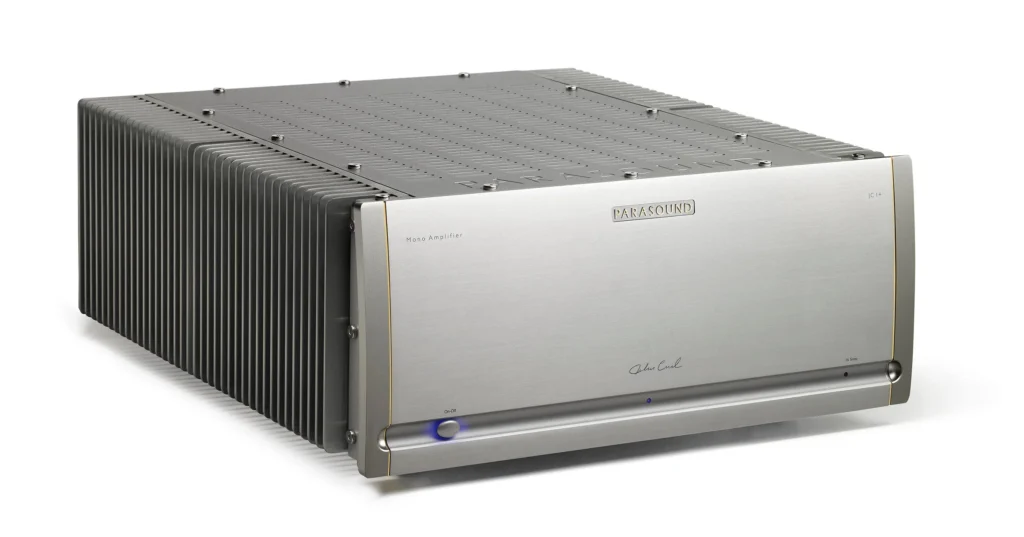
Having owned the Parasound JC5 stereo amp, I was intrigued to hear what the JC1+ mono amps could bring to the table in my system. It didn't take long to figure it out once I had them installed. They are more powerful than the JC5, but more importantly, they simply sound better in all the usual audiophile check boxes that we love to talk about. Greater dynamic swings, bigger sound stage in all dimensions, the first 25 watts are in pure Class A, and they have deeper and tighter bass.
The JC1+ amps retail for $17,500 per pair in black and $15,000 in the silver finish and were designed by the legendary audio engineer John Curl. It's hard for me to imagine that anyone shopping in this price range for new amplifiers would be anything less than thrilled with the JC1+ amps in their system. I know I am. As I said in my review, I was sad when it was time to ship them back to Parasound after I completed my review. I decided that I wanted them to be a part of my system and I purchased a brand-new pair after completing my review.
Read more HERE
Dean Seislove
Vincent Audio SV-500MK Integrated Amplifier ($1999.95)
I'm happy to report that selecting my choice for this year's Positive Feedback Writers' Choice Award was a breeze. No agonizing over the proportion of value versus performance. No mission to champion worthy innovation in the name of all-things audio. No fear of being seduced by the latest product du jour. Nope, this year, I just picked the one I liked the best.
The Vincent Audio SV-500MK Integrated Amplifier employs two 6N1 power tubes and one 12AX7 tube in the input stage to produce sound that is imbued with warmth and power. Loaded with inputs (2 Stereo RCA, Optical, Coax, Bluetooth, HDMI ARC), and outputs (Stereo RCA Rec Out, Stereo RCA Pre Out, 2 Power Control, 2 x 2 Speaker Terminal), the SV-500MK is the model of versatility. In addition, it offers all manner of playable digital formats (WAV, FLAC, APE, LPCM, MP3, ACC, AC3, WMA). The SV-500MK's clean design lines and scrupulously efficient front panel layout are par for the course for this German manufacturer, as is the solid casework and reassuring heft of this relatively compact integrated amplifier. The Vincent Audio integrated was unfazed by whatever genre I called up. Rated at RMS/8 Ohm: 2 x 50 Watt, it played music with surefooted confidence. Most importantly, for me anyway, the sound of this integrated was devoid of the audio tricks so often used to artificially create a sense of liveliness and expanded soundstage. Natural is the byword for the SV-500MK's tonal character. So says I. As a welcome bonus, its Bluetooth audio sound was an especially nice surprise, in that it sounded perfectly lovely overall.
In sum, the Vincent Audio SV-500MK Integrated Amplifier sounded great from the get-go and just kept getting better all the time. Easily recommended, and well-deserving of a Positive Feedback Writers' Choice Award for 2025.
Read more HERE
Dean Waters
Sendy Audio Aiva 2 Planar Headphones ($599)
These open-back planar headphones punch far above their price-point. The openness, clarity, and transparency is spectacular, especially in this price range. They have a gorgeous zebra wood casing and come in a rather seductive (if I'm being honest) hard-shell casing which is both durable and excellent for travel. The included high-end braided cables arrive in their own cloth drawstring bag and support both balanced 4.4mm and balanced 3.5 unbalanced connections (using the included adapter). The adjustable headband and multi-pivoting steel frame make them highly adjustable, even for the largest melon-head noggins (like mine!). Sendy absolutely nailed the cushioning surrounding the drivers. Not too soft and squishy and not too hard. The ear cups are large enough for the entire ear and don't press up against the earlobes. I've worn these many times for long listening sessions without any sense of discomfort nor ear fatigue. The sound is, to put it simply, sublime. Pure and clean. Every nuanced detail in even the high resolution recordings comes through with breathtaking ease. A listener would be hard pressed to find a better set of cans anywhere near this price point. They are simply brilliant and I treasure them dearly. At $599, they are an amazing bargain that can be enjoyed for years. Just don't drop them! They are planars after all.
Additional information can be found on their website HERE and they can be purchased from your favorite dealer or directly from Amazon HERE.
Greg Weaver
MoFi Electronics MasterPhono Phonostage ($5995)
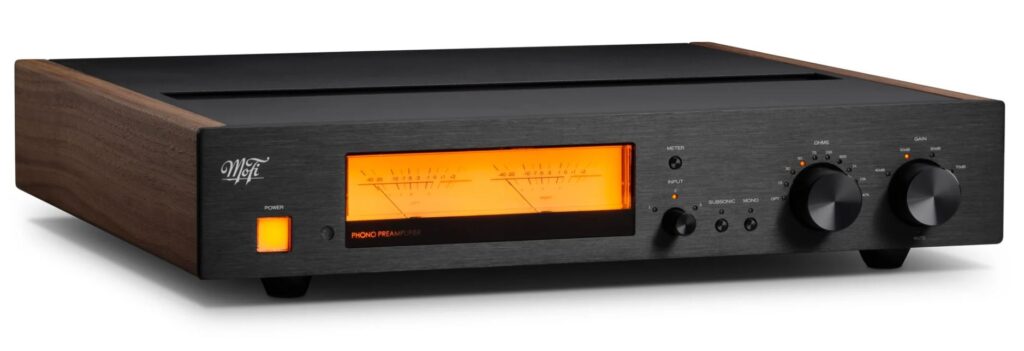
After taking up residence in my reference rig, its generous degree of midrange transparency, fleshed out with an unforced and remarkably authentic tonality, won me over in short order. It was articulate without being exaggerated or spotlit, yet rife with a liberal helping of body and bloom, revealing its uncanny ability to uncover detail with astonishing refinement, while providing for an extremely organic and involving presentation.
A closer examination of its frequency and tonal characteristics, starting with its foundation, reveals that bass is solid, tight, and rendered with exceptionally well-defined pitch. Midrange tone and texture are among this preamp's more significant gifts to listeners. Treble is purely portrayed; clean, laden with detail, and highly resolved, resulting in an almost magical presentation of the top octaves, extending smoothly beyond the audible bands, rendering both focus and "air" to spare.
And while it may not recover the last scintilla of resolution or transparency when contrasted with some more exotic designs, its capacity to serve up remarkably precise leading-edge transients, teeming with trailing decay and ambient nuance, to render a remarkably detailed and intricate view into the performance, one that is full-bodied, as well as descript and refined, it establishes the bar for its class, and honestly for many other entrants that cost considerably more. As such, the MoFi MasterPhono Phonostage earns my most enthusiastic recommendation.
Read more HERE
Parasound JCA100 Tribute Amplifiers ($30,000 per pair)
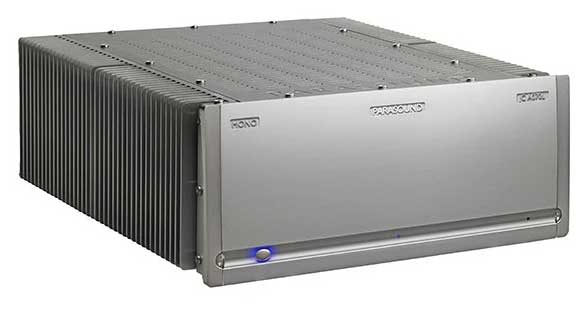
To my ears, the JCA100 Tributes boldly exemplifies what the Parasound brand has represented since its founding in 1981, as an unassuming product capable of delivering demandingly high-performance without unnecessary frills, one that confidently and comfortably steps aside, clearing the path to allow the music to take center stage.
I find the JCA100 Tributes to be the crowning achievement in Parasound's now storied list of accomplishments. Its overall tonal balance is exceptionally evenhanded, offering radiant, lifelike tone color and full, dense textures. Its ability to render markedly authentic timbre, instrumental bloom and body, bursting with dynamism and attack, all add up to an exceptional level of performance, making it arguably the most significant accomplishment in Parasound's nearly forty-five-year history.
Read more HERE
Robert S. Youman

Patricia Barber, Modern Cool, IMPEX Records (33 RPM)
I think that Abey Fonn, Robert Sliger, and Bob Donnelly over at IMPEX Records have been listening and paying close attention to their customer feedback. This IMPEX reissue of Modern Cool is not a 45 RPM One-Step, though it is somewhat of a slight variation. Cut at 33 RPM on two LP's, it is priced at $89.95, which is not the typical $100 to $150 for many current 33 RPM and 45 RPM One-Step's. It does include many, but not all of the standard One-Step virtues. Though there is no deluxe and/or highly designed slipcover, it does include a pressing on the exceptionally quiet and revealing VR900-D2 vinyl, a high gloss thick stock gatefold jacket, and a 16-page booklet with full lyrics and rare photos. Let's not forget that Bernie Grundman, one of our true industry masters cut both LPs. It will be interesting to see if this might be the new sweet spot and combination for elite audiophile LP reissues.
Primarily known as a singer songwriter and jazz pianist, it is still very difficult to place Patricia Barber within any one musical genre. Along with her own songs, her interpretations of many jazz and pop/rock standards are wonderfully creative and entertaining. Patricia is also highly underrated as a pianist and vocalist. Her sense of timing and style are without peer. She can gently sweep you off your feet with romance and wit, or have you standing tall rocking with the best air guitar. From every perspective, she is just one fantastic musician and performer!
With my first needle drop on this reissue, I knew immediately that this was going to be a different experience. The 33 RPM cut by Bernie Grundman did not hold anything back. The astonishingly quiet VR900-V2 vinyl was also a major contributor. The clarity and definition of all the musicians was simply amazing! Patricia's vocals now popped out of a deep black background with additional expression and bloom. Bass was even tighter and with more impact than the OG, as if that was even possible. Without question, Impex hit this one out of the proverbial ball park!
Read more HERE

Wilco, A.M.. Rhino High Fidelity (33 RPM)
Wilco was formed in 1994 by the remaining members of the alternative country group Uncle Tupelo, after Jay Farrar's departure that same year to form Son Volt. The Wilco lineup has evolved over the years, though Jeff Tweedy has continued to be the primary song writer, lead guitarist and vocalist. I have seen Wilco several times in the Chicago area and at various venues. This includes my all-time favorite Wilco concert at the Chicago Opera House in 2011, which I attended with my daughter (also a huge Wilco fan). In virtually a three act play, Wilco spanned their entire discography that night, with an incredible display of musical and artistic brilliance! What a memorable and inspiring concert!
I also have all the original pressings from the Wilco catalog. Most were on the Sire, Nonesuch and dBpm labels (as were the reissues). The sound quality of these OG's are some of the best in my entire collection. My favorite is the 2010 RSD four LP box set Kicking Television (Live In Chicago). Talk about an "in the room" experience! You can find it on Discogs priced as high as $1000. Come on Rhino! This spectacular box set also deserves a Rhino High Fidelity type first class reissue!
Wilco's first album was A.M., which was released in 1995. This Rhino High Fidelity reissue is without question my new "go to" pressing. The OG is no slouch, but this reissue cut by Kevin Gray is in a different league. It has more emotion, more warmth, and an extraordinary amount of additional inner detail and transparency. The icing on the cake is the Rhino High Fidelity packaging, which includes a heavy weight glossy gatefold jacket, a cool OBI, and extensive liner notes by Bob Mehr. It's also important to note the super quiet 180 gram vinyl, and that it was pressed at Optimal in Germany! All in all, and at a retail price of $39.98, this was a tremendous choice by Patrick Milligan over at Rhino High Fidelity! An unexpected selection for an audiophile pressing, yet superbly satisfying!
Read more HERE
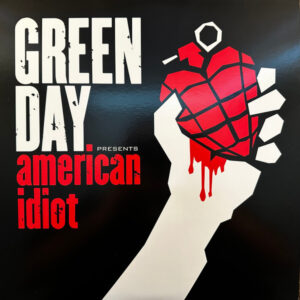
Green Day, American Idiot. Because Sound Matters (33 RPM, One-Step)
My 2025 review of this One-Step reissue of Green Day, American Idiot is actually a follow-up to my 2024 review of the One-Step reissue of Green Day, Dookie. Both were released by the Because Sound Matters label. This was all inspired by a discussion with my own kids and several nieces and nephews at a family holiday dinner. All grew up with these albums during their teenage and college years, and all declared them as two of the most important for their generation. There was some fairly passionate disagreements about which album was the better, but all agreed that both were truly iconic.
Released in 2004 on Reprise Records, American Idiot was Green Day's seventh studio album with total sales just behind the 1994 Dookie, their most successful studio effort to date. Certified 6x Platinum by the RIAA, American Idiot won the 2005 Grammy Award for "Best Rock Album." Rolling Stone magazine named it number 225 on their 2020 "500 Greatest Albums of All Time" list. Described by band members as a "Punk Rock Opera," American Idiot follows the story of Jesus of Suburbia, an American adolescent and highly flawed anti-hero. With this story-line serving as the foundation, Green Day returned to its fervent punk rock roots with more of a creative and theatrical presentation.
Selecting American Idiot for a One-Step treatment was truly an inspirational choice by Tom "Grover" Biery, one of the key decision makers over at Because Sound Matters. No expenses were spared, as this box set includes two LPs cut at 33 RPM by Levi Seitz at Black Belt Mastering, and was pressed at RTI on 180 gram Neotech D2 vinyl. It was also packaged with a foil stamped slipcase and a thick stock gatefold jacket by Stoughton Printing. With Tré Cool on drums and Mike Dirnt on bass, you immediately sense an additional drive and muscularity. For Punk Rock fans, this is a rhythm section to die for, and they are finally they given their proper due! Highs have opened up considerably, and there is a transparency in the mids that magically brings Billie Joe Armstrong on vocals to the forefront. You might even understand all of his lyrics for the first time! Though the OG is good, the One-Step will have you moshing across your living room floor!
Read more HERE
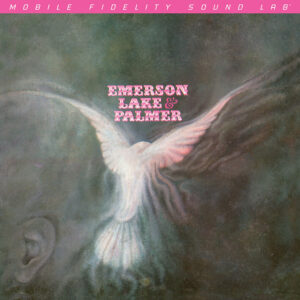
Emerson, Lake & Palmer, Emerson, Lake & Palmer. Mofi (33 RPM LP)
One of the finest debut albums ever, Emerson, Lake & Palmer was originally released in the USA on the Cotillion Records label in 1971. As somewhat of a Supergroup, this trio quickly evolved into one of the most important Progressive Rock bands from that era. Keith Emerson from The Nice (organ, piano, and synthesizer), Greg Lake from King Crimson (bass, guitar, and vocals), and Carl Palmer from Atomic Rooster (percussion), all provided an eclectic combination of Classical, Rock, and even Jazz virtuosity.
Much of the music on this debut album were Rock adaptations and re-arrangements. This included "The Barbarian" which was based on "Allegro barbaro" by Béla Bartók. "The Three Fates," which was based on the Greek myth of the three Moirai, who were Clotho, Lachesis, and Atropos. There were also original songs like "Take a Pebble" and "Lucky Man," which were both written by Greg Lake and released as singles.
When compared to the OG, the Mofi was the clear gold star winner! Cut by Krieg Wunderlich, there was now an immediacy and addictive rich sonic texture that just jumped off the vinyl. The Moog synthesizer had so much more bottom end wallop that it was almost physically startling. Acoustic guitar had a texture and timbral purity that was now more realistic if not thrilling. Greg Lake on vocals was so much more engaging, with a liquidity and bloom that I had not experienced before on any other ELP recording. All of this was realized with an amazingly flat and quiet vinyl pressing from the new Fidelity Record Pressing plant in Oxnard, CA. For your $39.98, you get more than just top notch value and performance, you get one of the finest sounding reissues of the year!
Read more HERE

